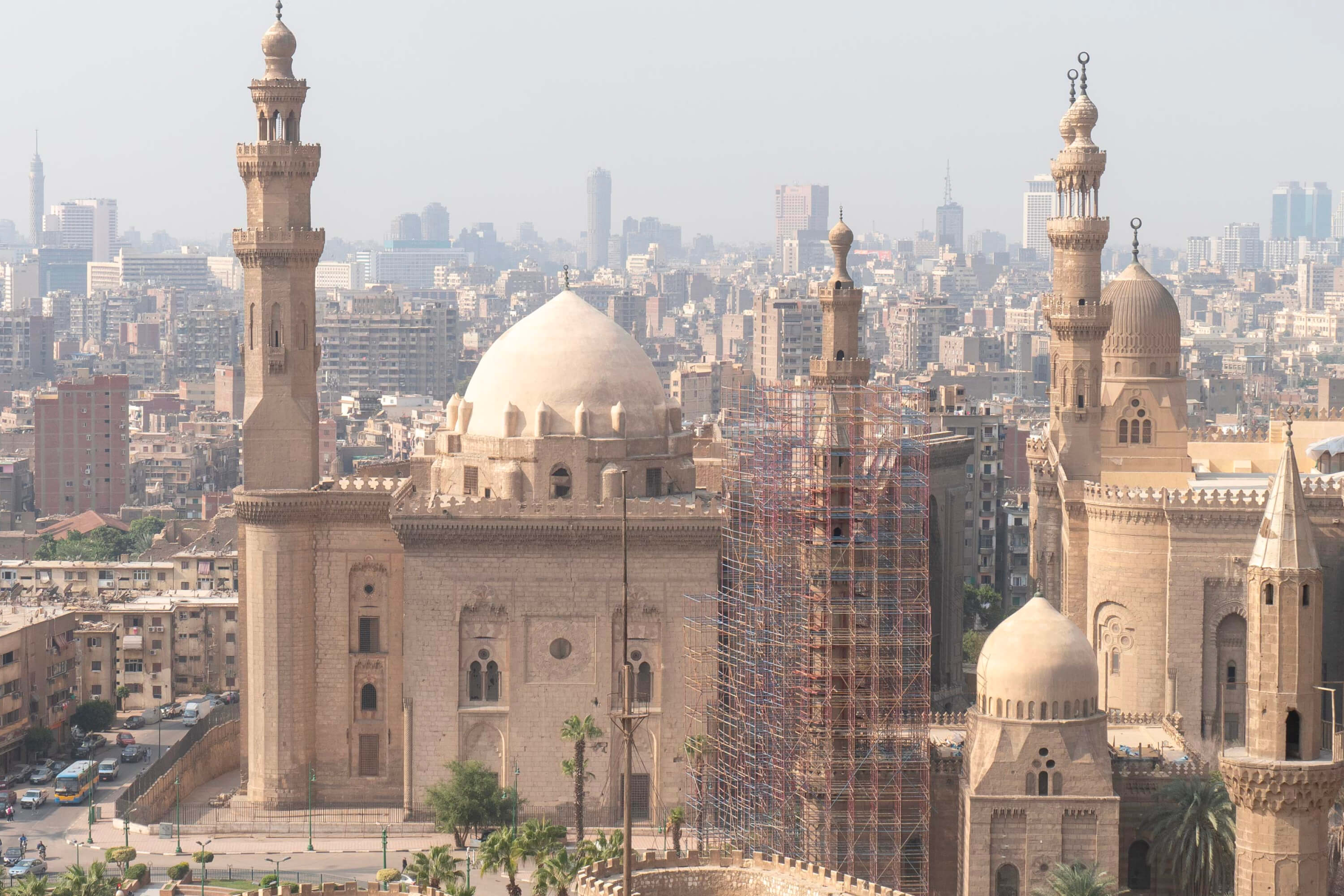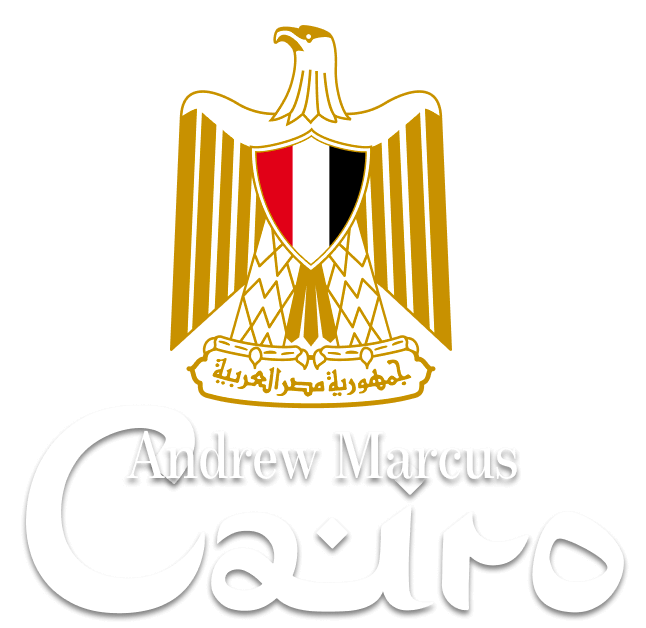Cairo
Cairo is the capital of Egypt and the consistent winner of the surveys “Which city would you never return to?”
Can confirm: the city is muck. Thanks to the pyramids and cheap resorts, Egypt has been firmly labeled as a “tourist country.” It’s true: slightly more tourists visit the country than Germany. But they all go to resorts like Hurghada and Sharm El-Sheikh. Cairo is visited in passing on the way to the pyramids because, frankly speaking, there’s nothing to do in the city. And the Nile flowing through doesn’t help matters.
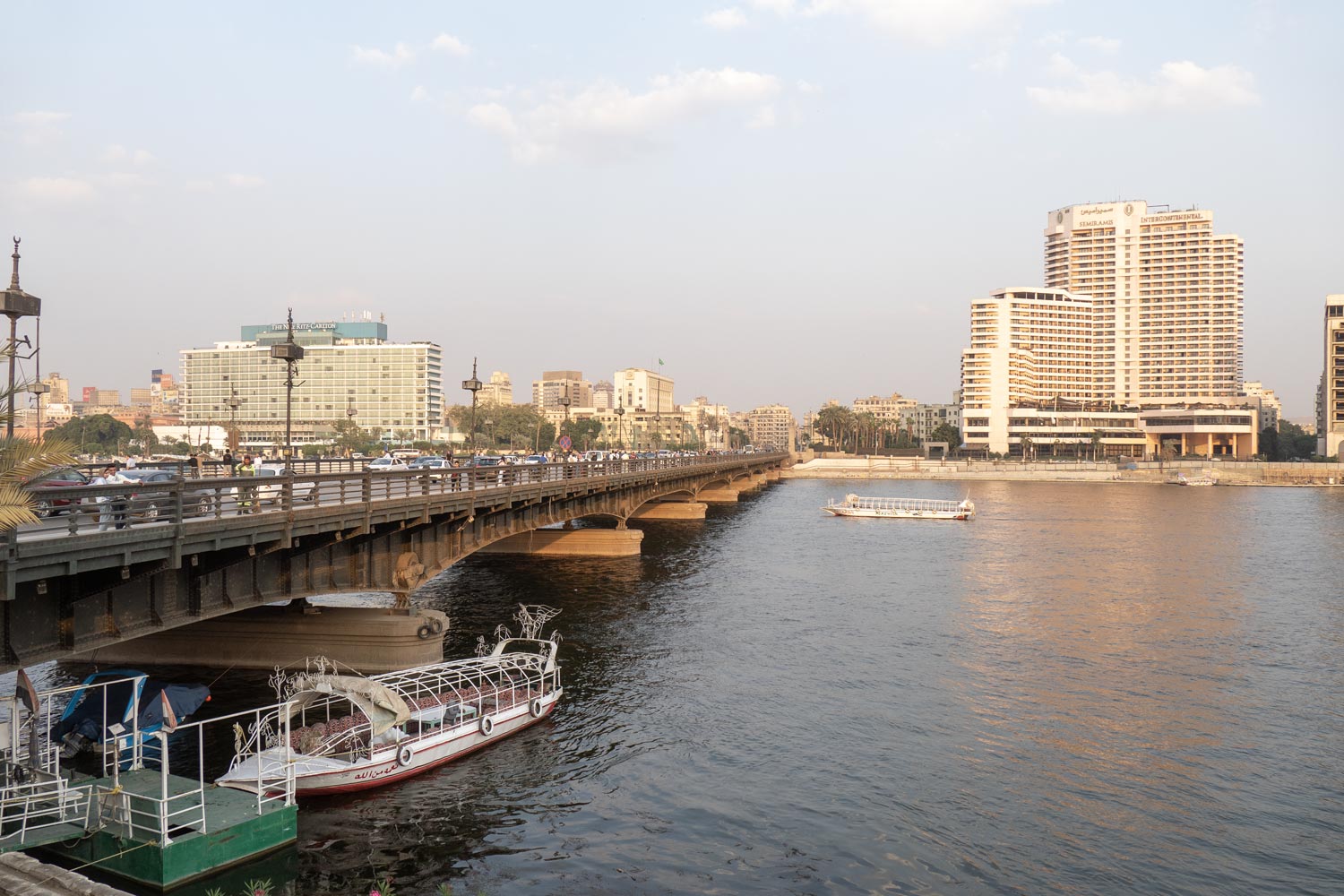
The center of Cairo is Tahrir Square and the surrounding areas. The reader might have heard about this square in the news. It’s the favorite spot for Egyptian revolutions. First, in 1952, Egyptians achieved independence from Britain here, and then in 2011, they ousted President Hosni Mubarak, who had ruled the country for 30 years.
Tahrir Square is an absolutely dull place. In fact, it’s not really a square but rather a flowerbed with an obelisk in the center of a roundabout.

Moreover, the obelisk was installed in the square a couple of years ago. Obviously, it was to prevent people from setting up a tent camp and starting a new revolution.
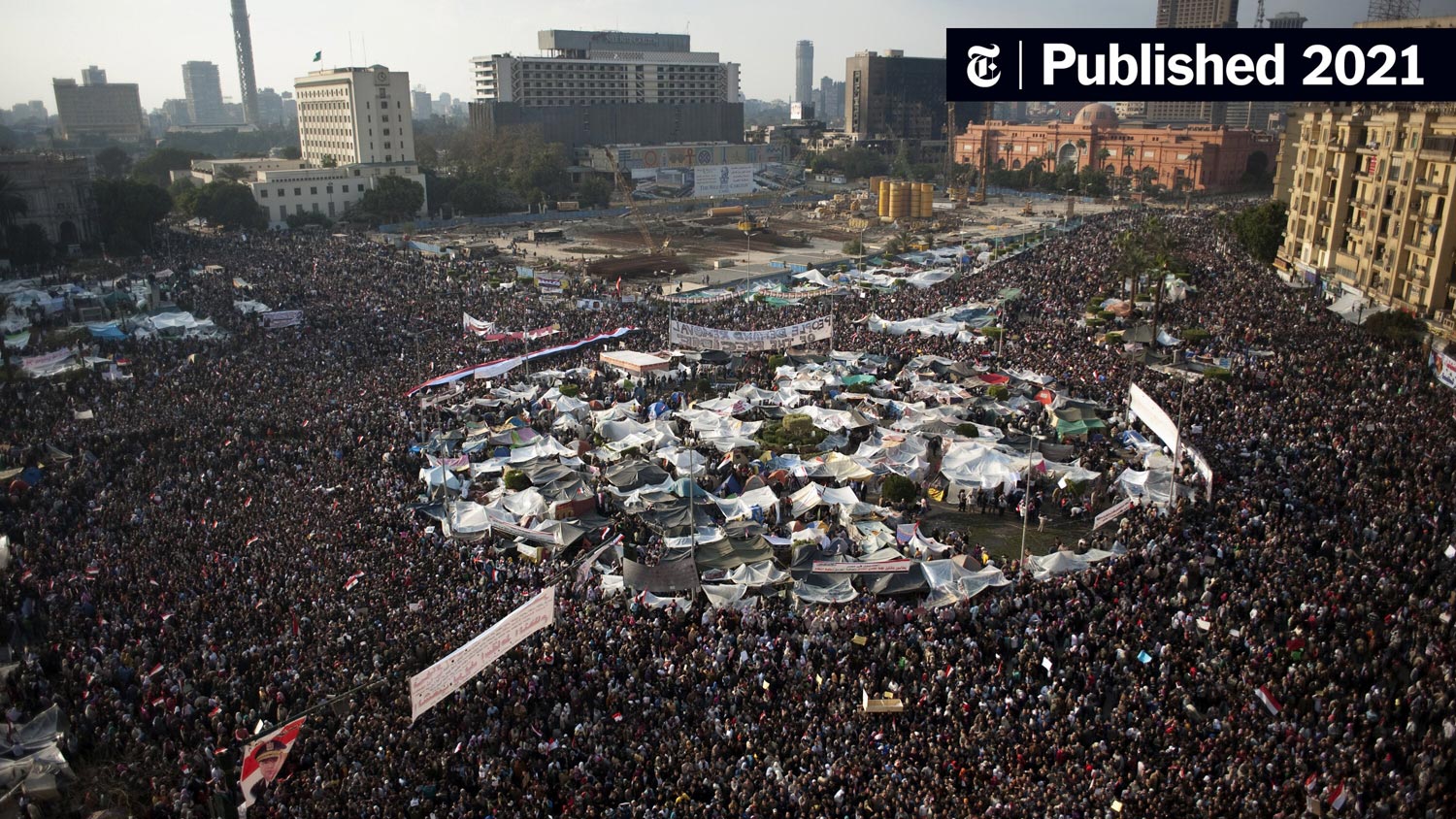
Not far from the square is one of the few interesting places in Cairo — the national museum with a vast number of ancient artifacts.
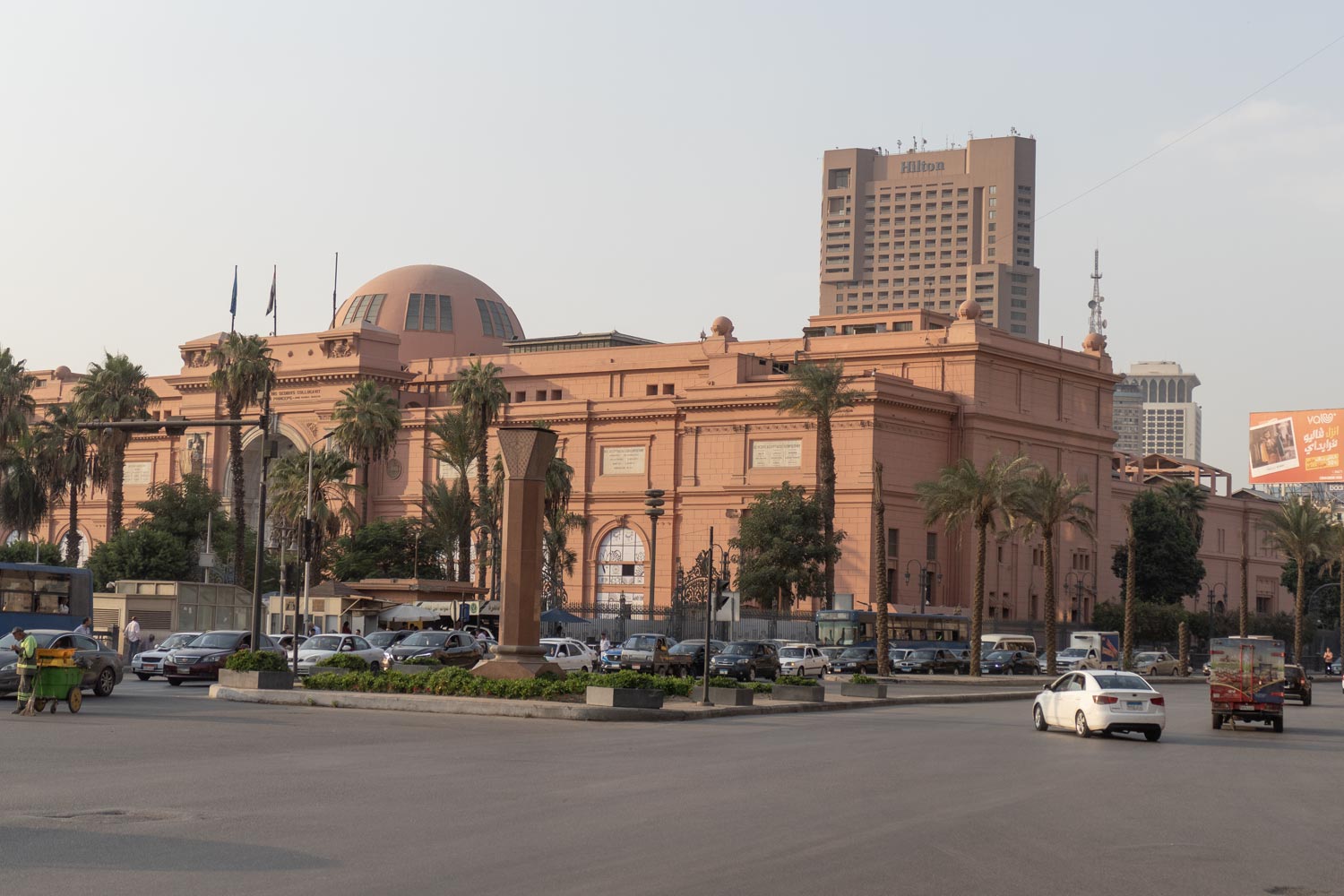
Although the museum has a total of 160,000 exhibits and is literally overflowing with sarcophagi, mummies, ornaments, and jewels, its main exhibit is the golden mask of Tutankhamun. That’s what tourists come to see.
The mask is made of pure gold and adorned with precious stones, weighing a total of 11 kilograms. This artifact is truly unique, one of a kind in the world. When British archaeologist Howard Carter discovered Tutankhamun’s tomb and found the golden mask in 1922, it became the greatest archaeological discovery of the 20th century.
The fact is that over several millennia, all pharaohs’ tombs were looted, and archaeologists did not expect to find an intact tomb with burial treasures. Incredibly, exactly one tomb survived intact — that of Pharaoh Tutankhamun, which remained undiscovered for many centuries.
It survived purely by chance. Tutankhamun became pharaoh at the age of 9 and then suddenly died when he was 19. Therefore, there wasn’t enough time to build a large, luxurious tomb for him, so they used a modest tomb that was originally intended for his advisor.
The tomb was almost immediately looted, and it happened twice. Both times the robbers were caught, and the stolen items were returned. However, rumors about the second robbery managed to spread among the people. Perhaps they were even spread intentionally, without mentioning that the treasures had been recovered. As a result, the tomb was not disturbed again, and a couple of centuries later, when a new pharaoh’s burial chamber was being built nearby, it was completely covered with stones and construction debris.

Over time, the tomb was so forgotten that eventually builders simply erected their huts right on top of it. Thanks to the debris, the tomb was never found or looted again. However, Howard Carter discovered it after digging in the ground for 15 years, despite assurances from the entire community that all the tombs had long been found and that Carter had gone mad.
The name Tutankhamun has since become proverbial, while Carter’s name is known only to encyclopedists. The treasures he found, led by the burial mask, are now kept in the Egyptian Museum in a separate hall with enhanced security. Of all the exhibits in the museum, only the Tutankhamun hall is prohibited from being photographed. It is so strictly forbidden that even your inobeisant servant couldn’t do it: the guard simply stands there, staring at the mask without looking away.
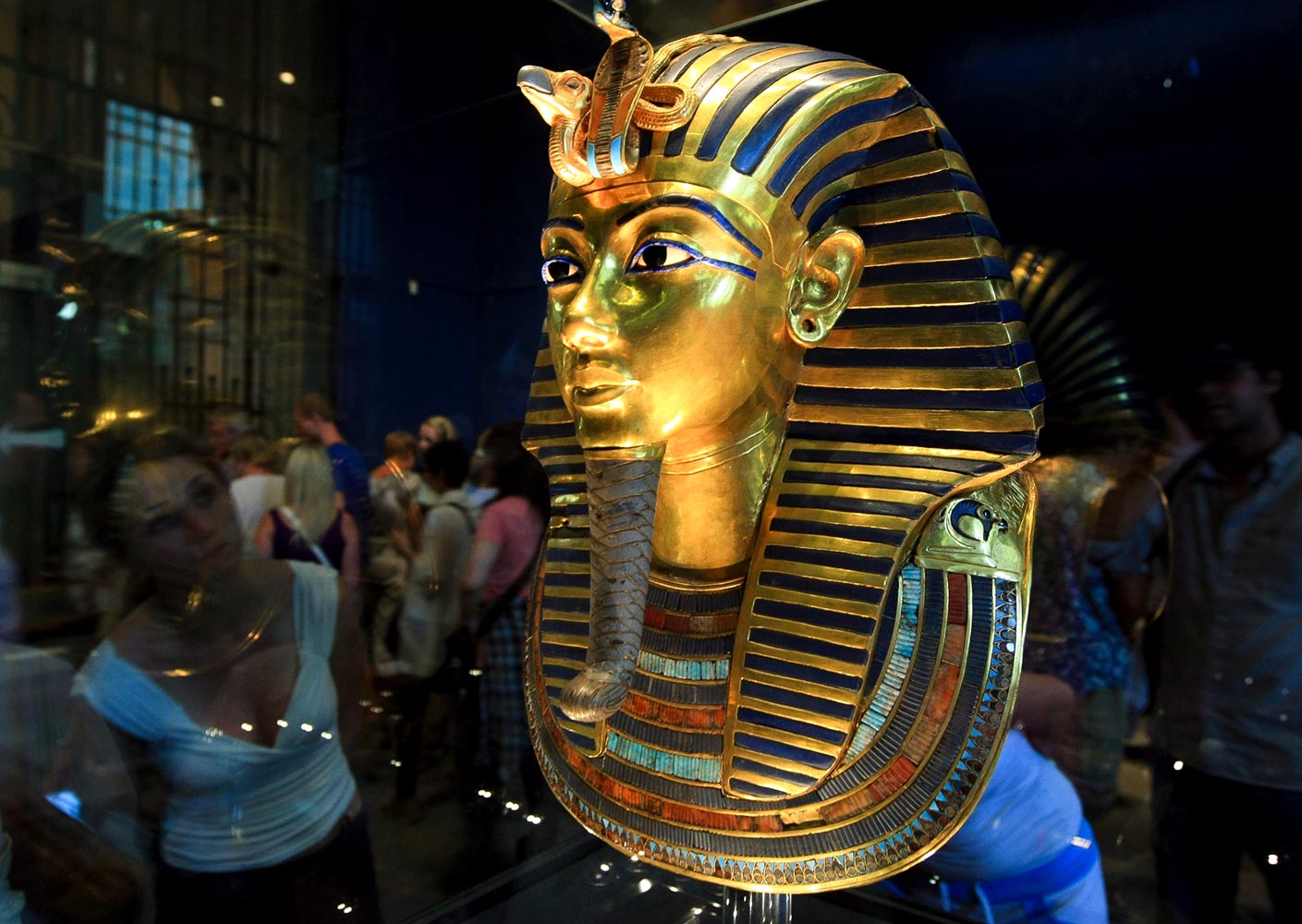
All the other belongings of Tutankhamun can, in principle, be quietly snapped. It is, of course, absolutely mind-blowing. Golden beads, necklaces, statuettes. The coffin is also covered in gold and entirely inscribed with hieroglyphs and scenes.
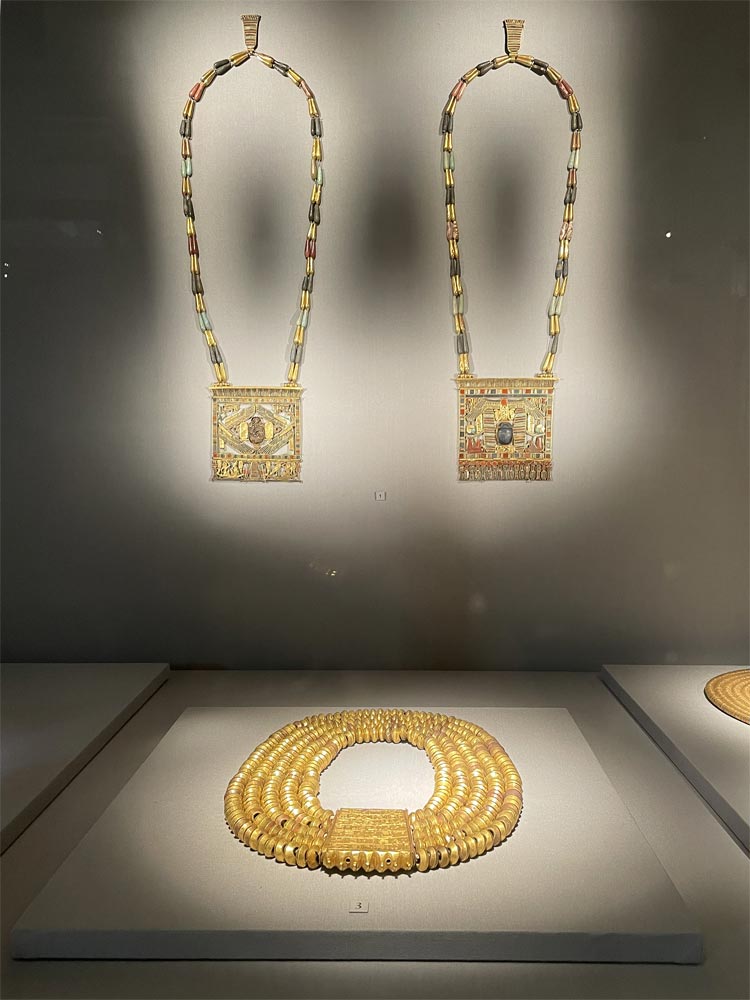
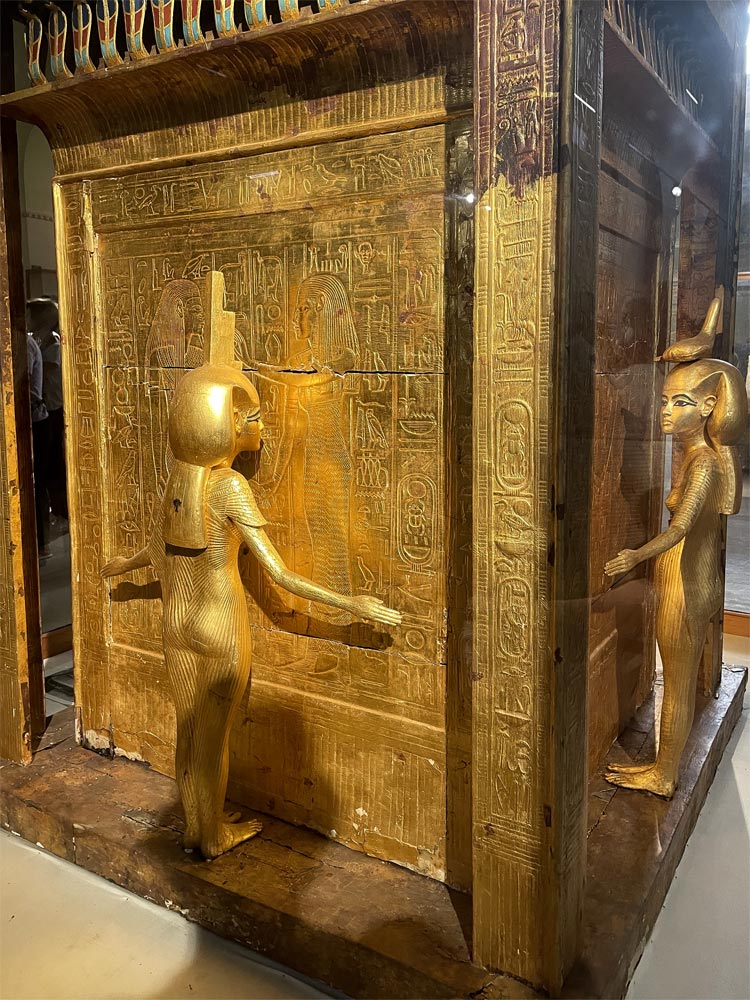
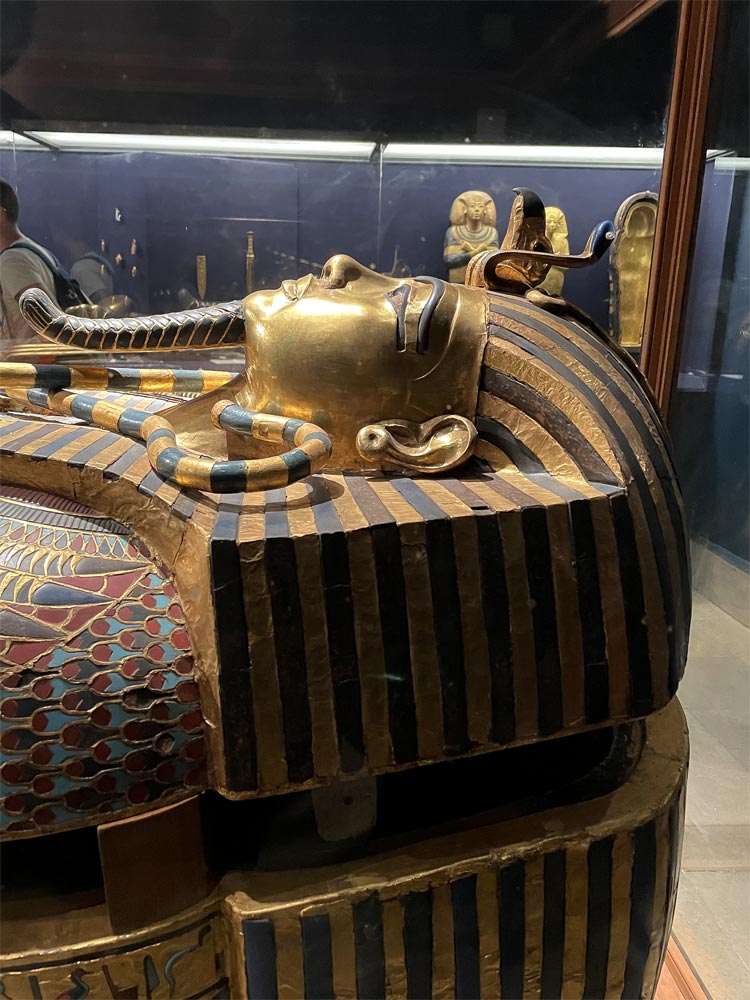
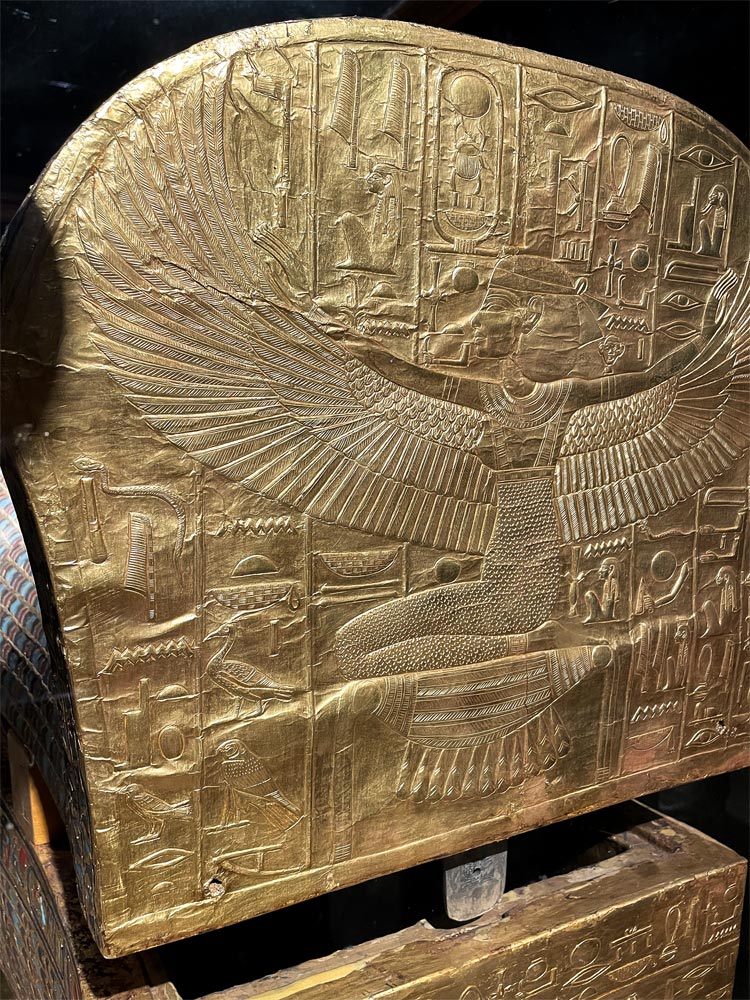
By the way, photography in Egypt is generally problematic. It wasn’t until 2022 that authorities allowed street photography; before that, you needed to obtain official permission from the Ministry of Tourism. As is common in Islamic countries, the police often disregard the law: when I walked around downtown Cairo with a camera, a plainclothes officer approached me, flashed his badge, and asked to see my photos. Not very polite for a “tourist country.” And what is there to shoot anyway?

Cairo, even in the center, is some sort of dusty concrete mishap.
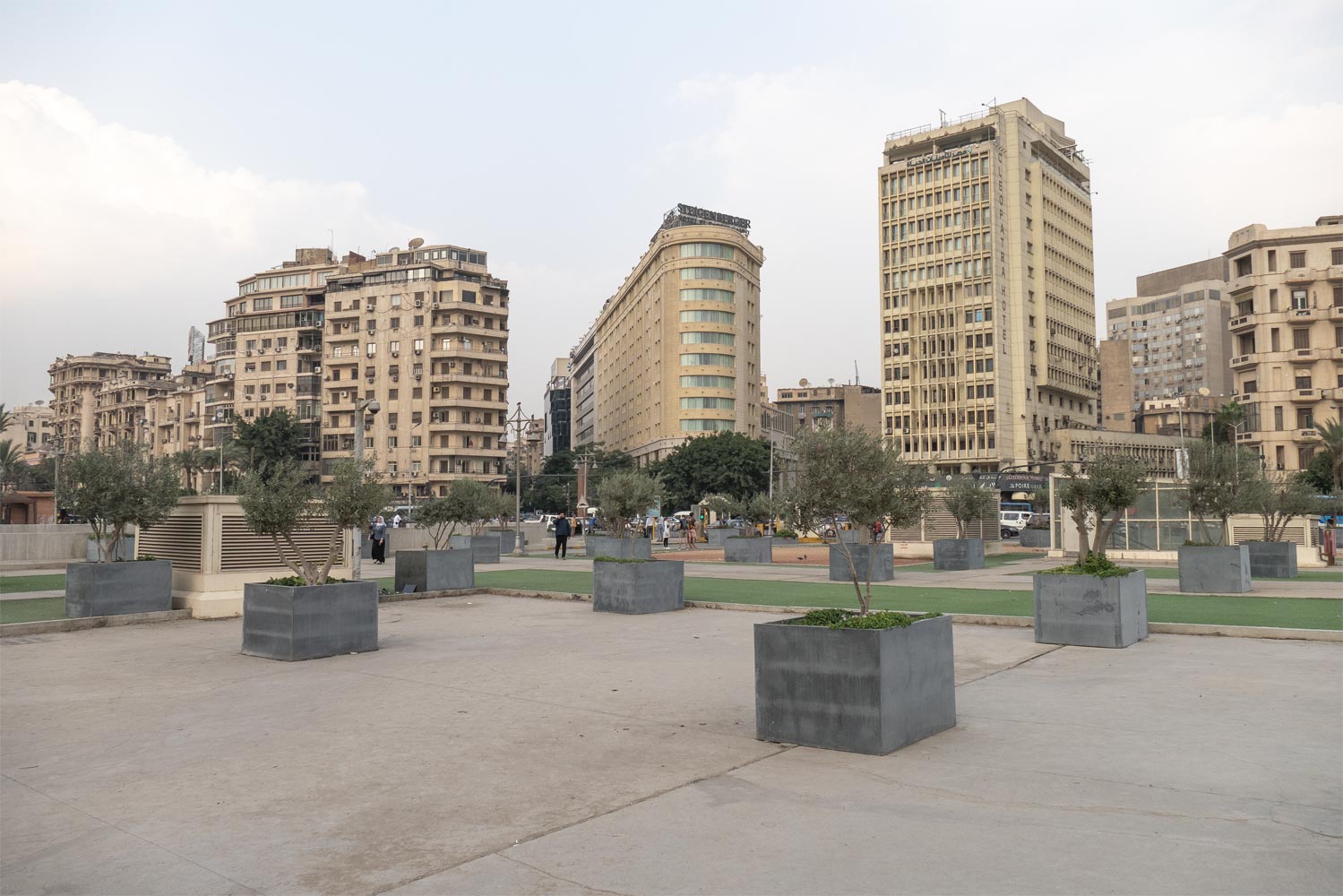
One of the most expensive hotels, overlooking the museum and Tahrir Square, looks more like a telephone exchange building in Kyrgyzstan.
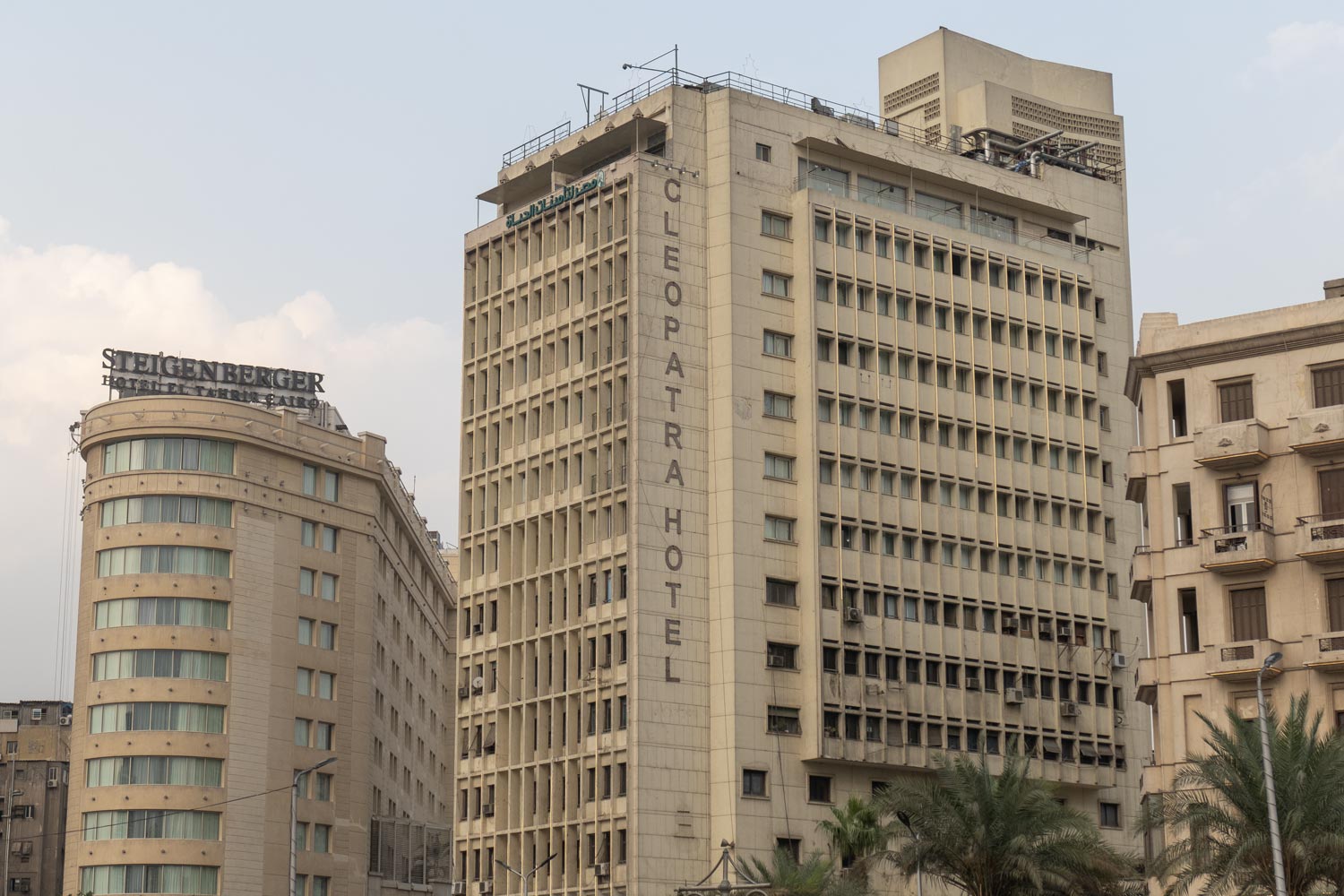
The streets, even in the center, look as if a dust storm just swept through a backwater town.
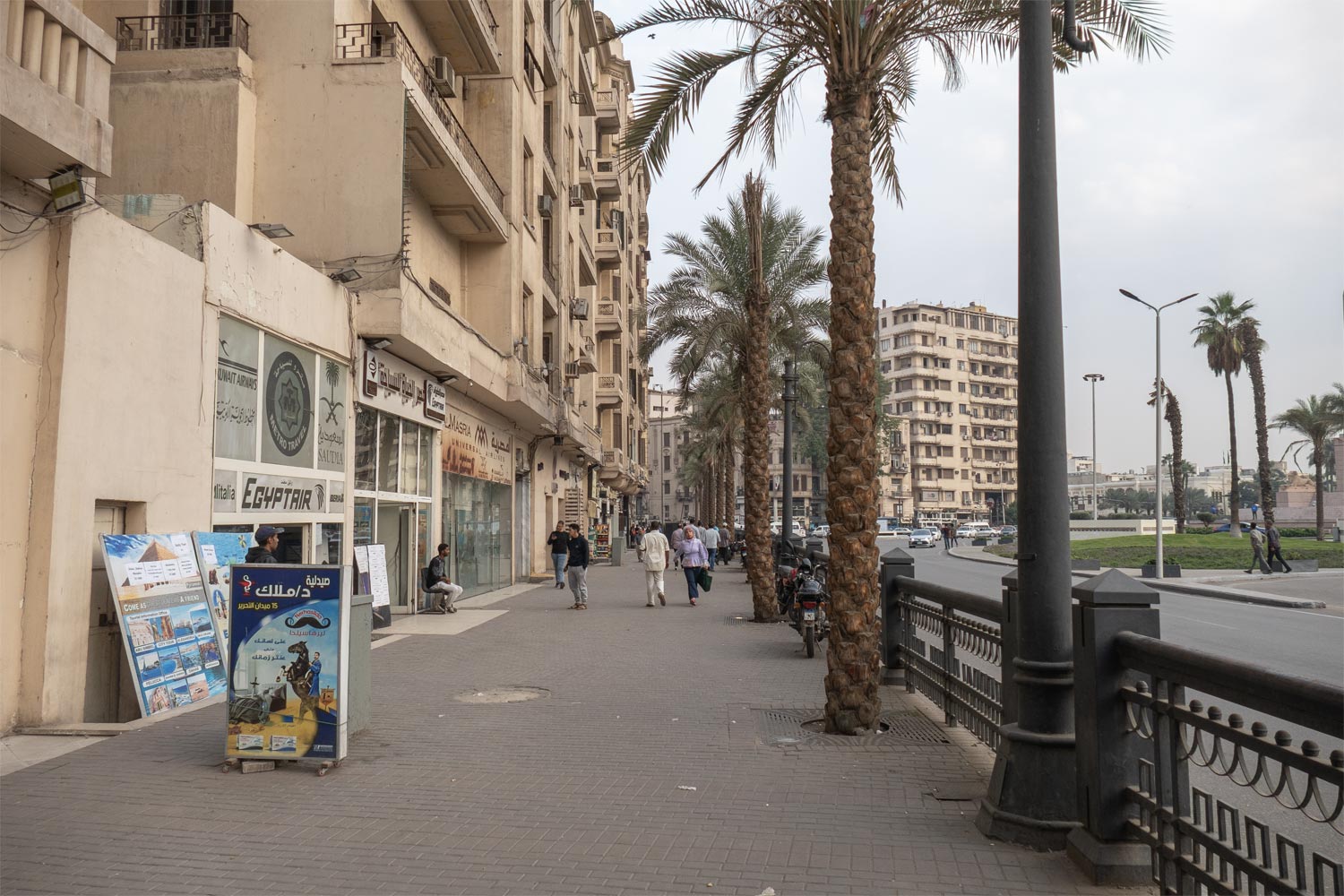
Interestingly, if you look long enough at the buildings in Cairo, you can discern some quite decent architecture.

But here’s the problem: this decent architecture is so marred by air conditioners, advertisements, and just plain dust that it’s hard to see it behind all the clutter.
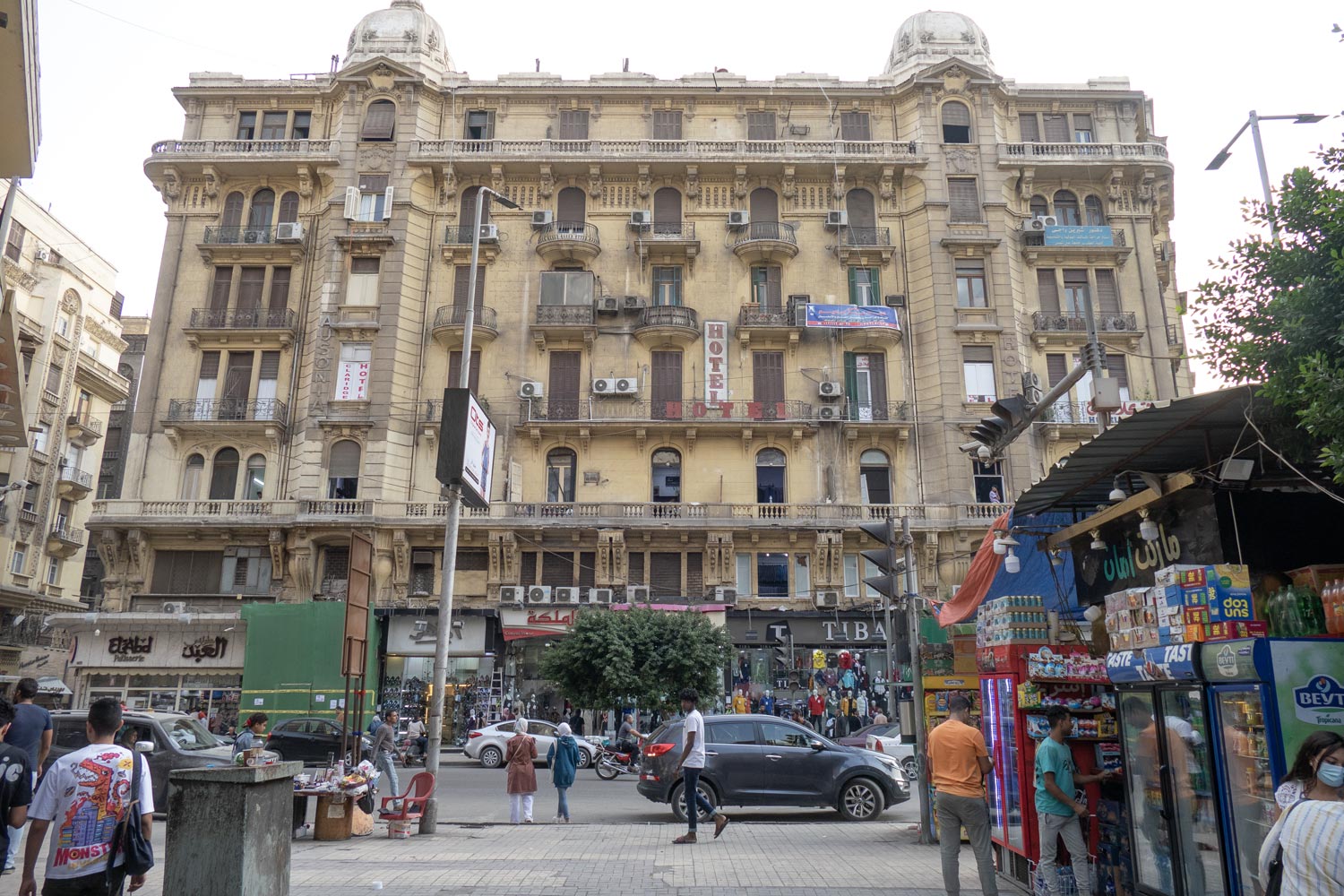
Just look at these rows of air conditioners! There are more of them than there are rooms in the hotel!
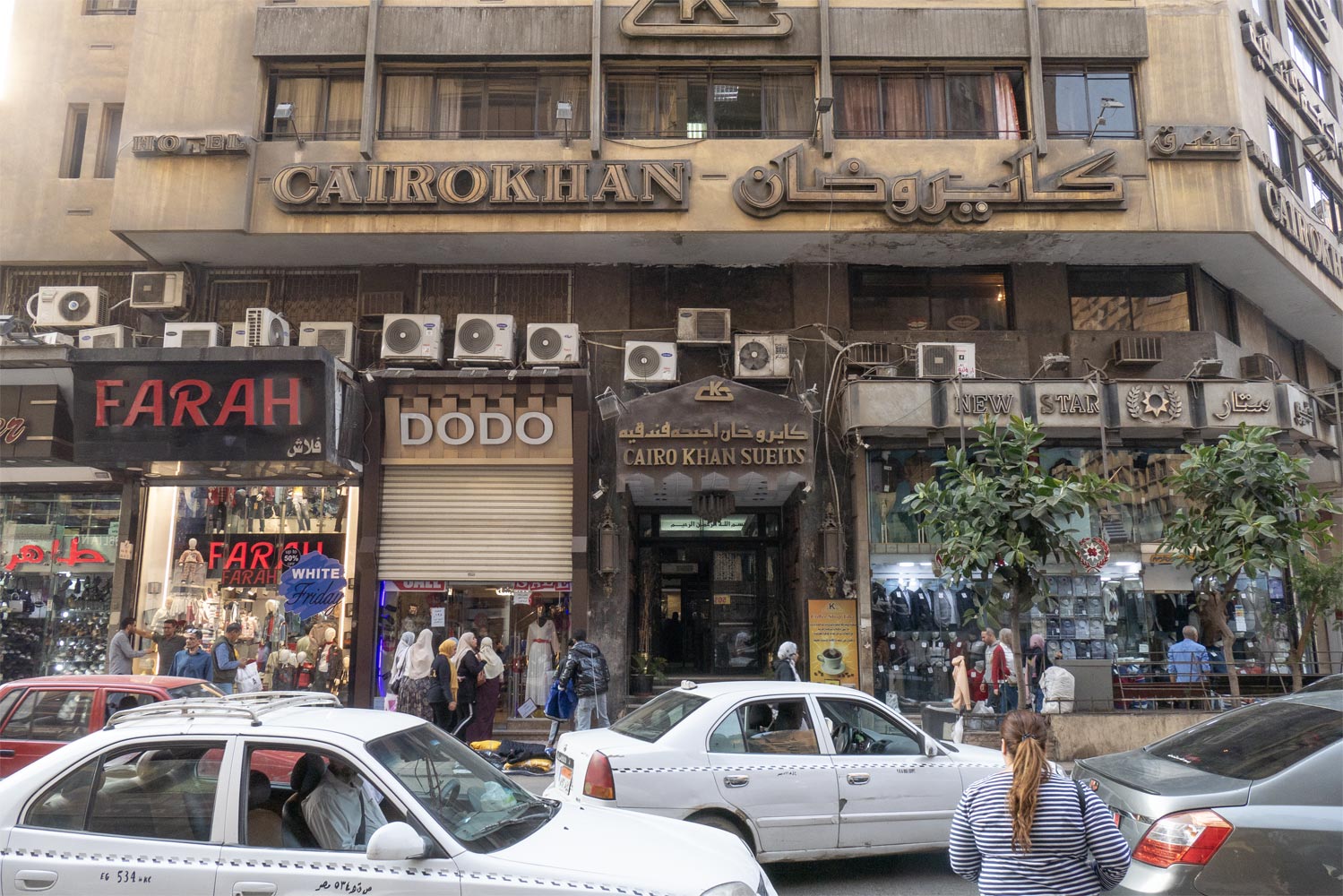
The beautiful colonial houses are in a terrible state. They look as if they were rinsed with the leftover water from cleaning the floor.

On the balcony of a luxurious palace, laundry might easily be hanging out to dry, and the ground floor will inevitably be cluttered with Arab shops selling chips and instant coffee.
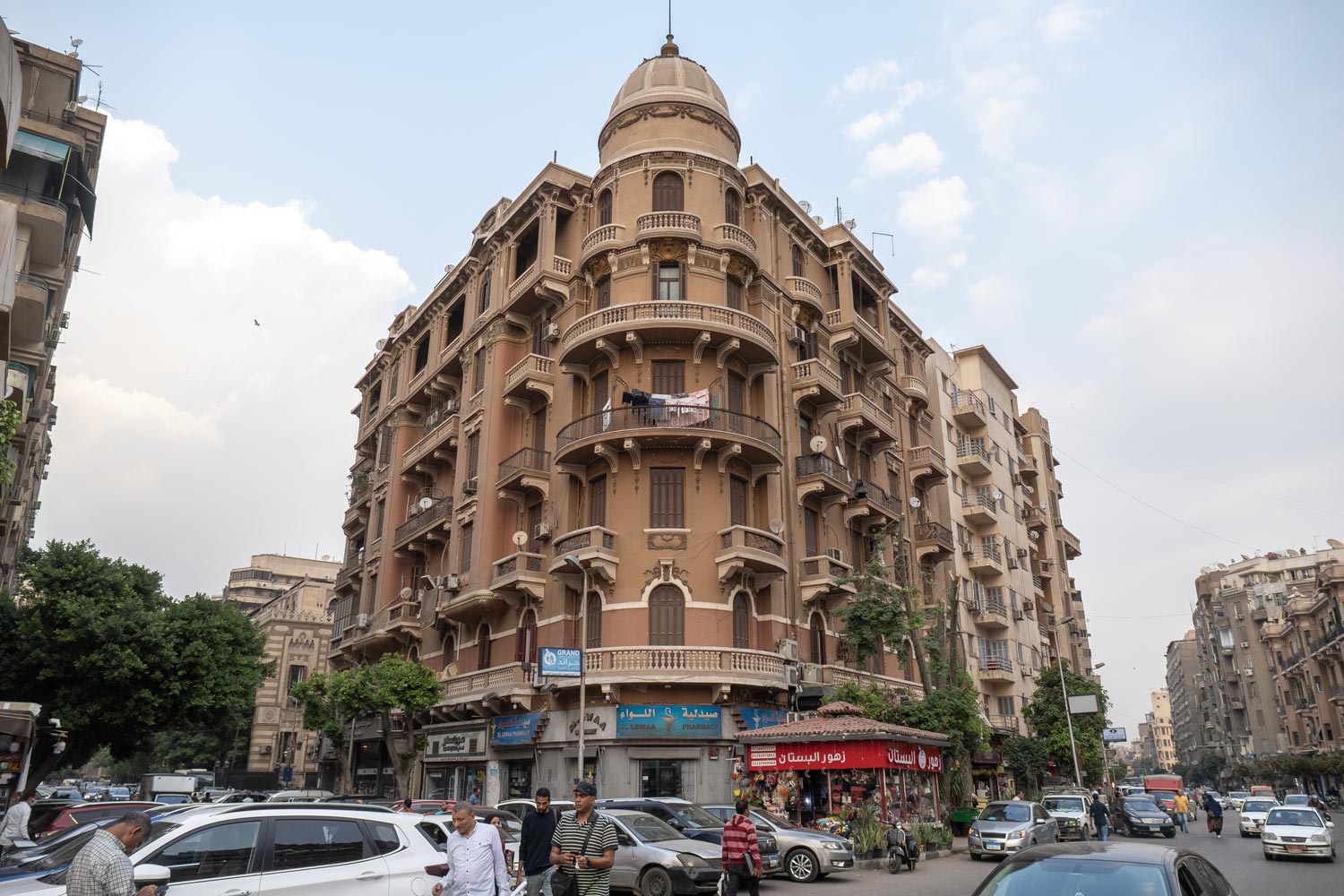
In the old Arab tradition, by opening shops on the ground floors of residential buildings, Cairenes have blocked the sidewalks to such an extent that you have to walk around them on the road.
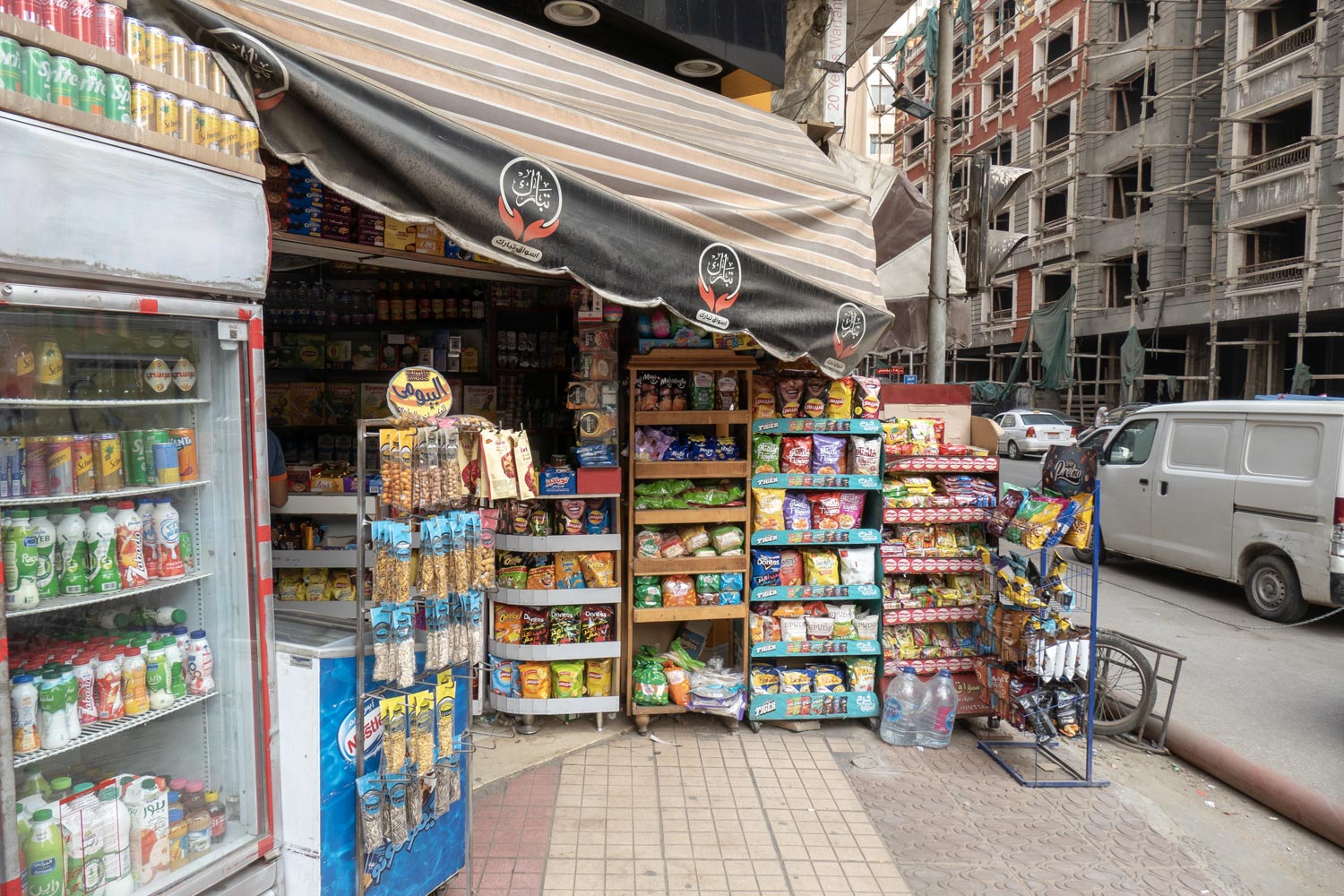
However, people in Egypt are so easygoing that they don’t particularly need sidewalks. They move along the roadway as freely as Aladdin hops through the levels of a video game.
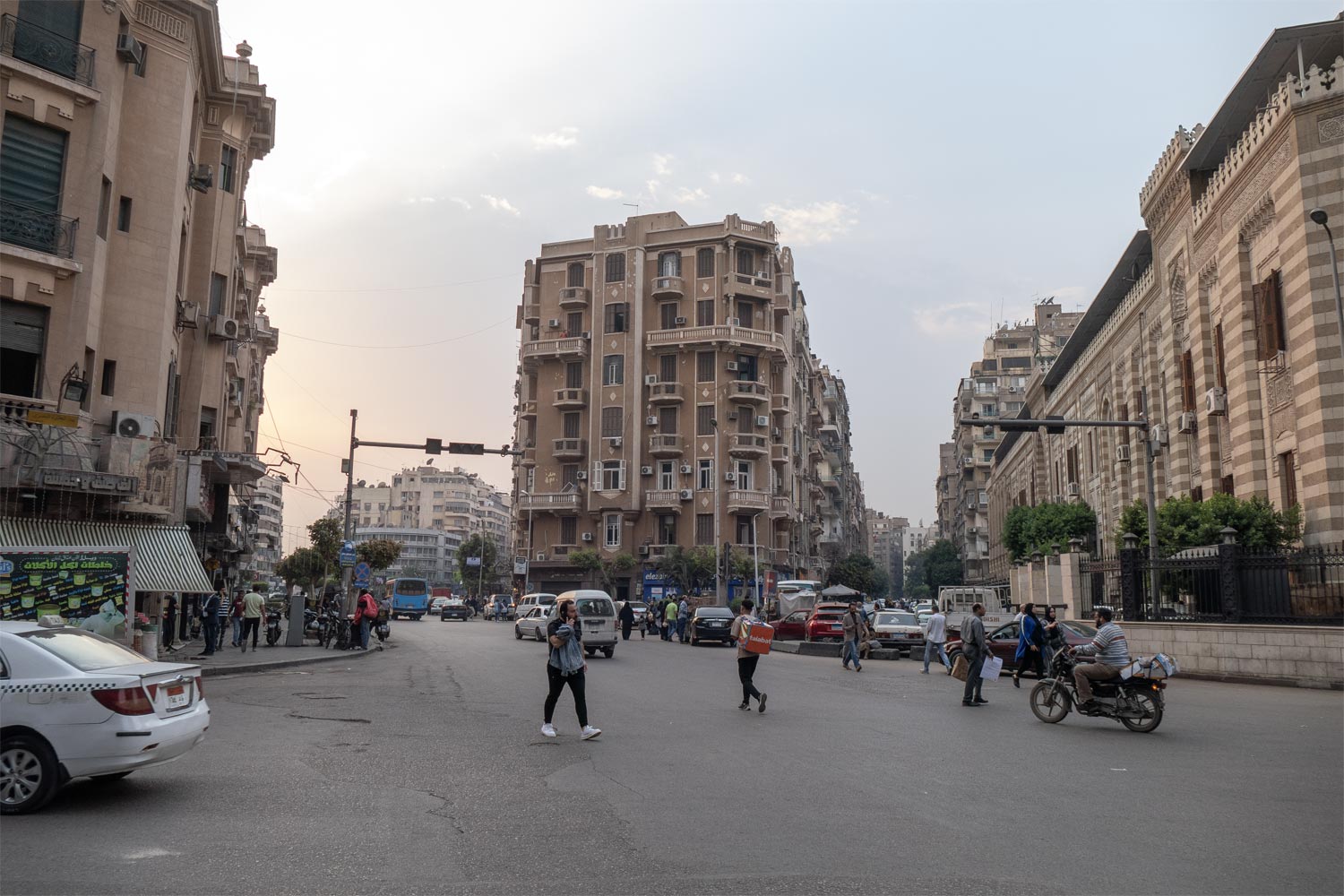
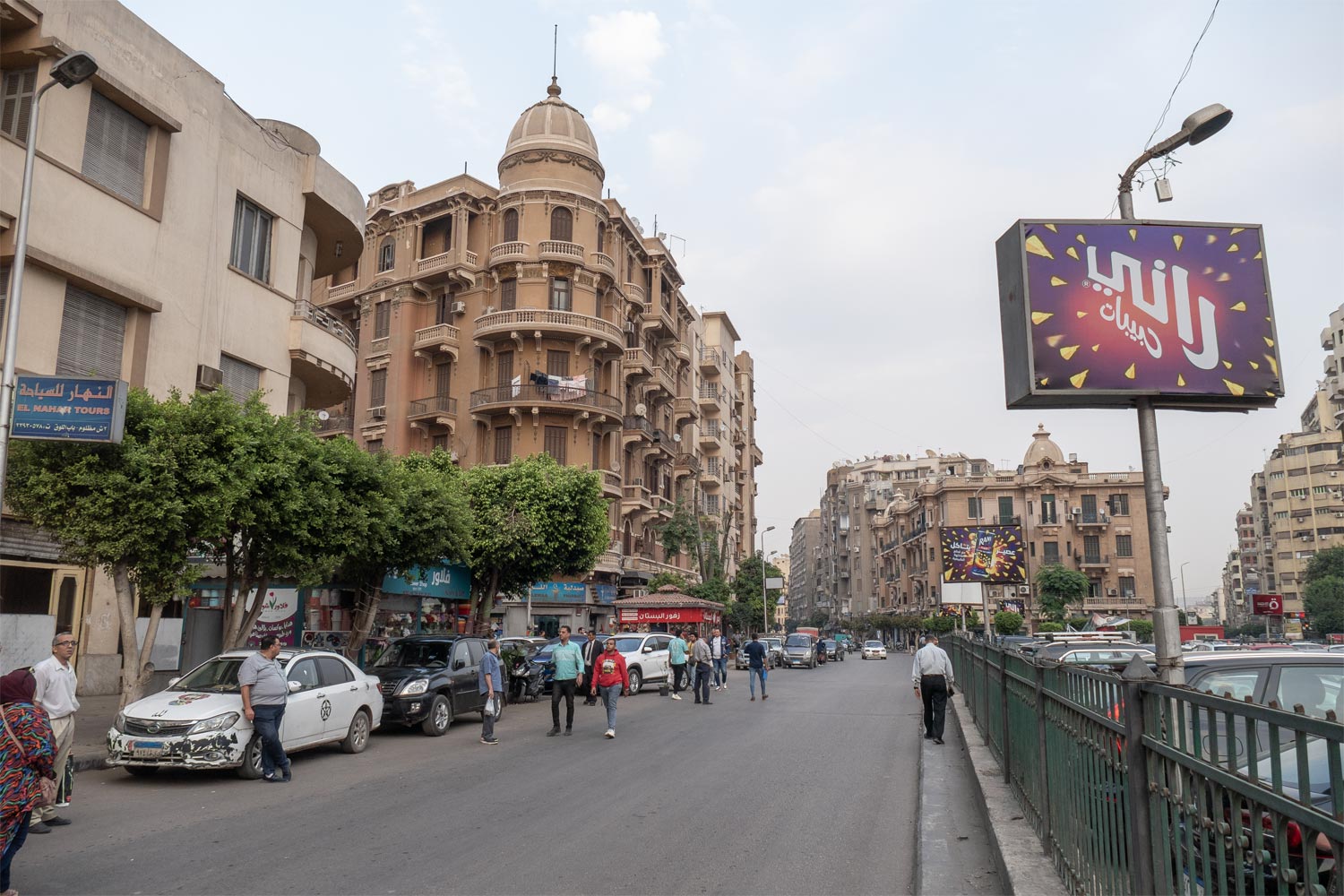
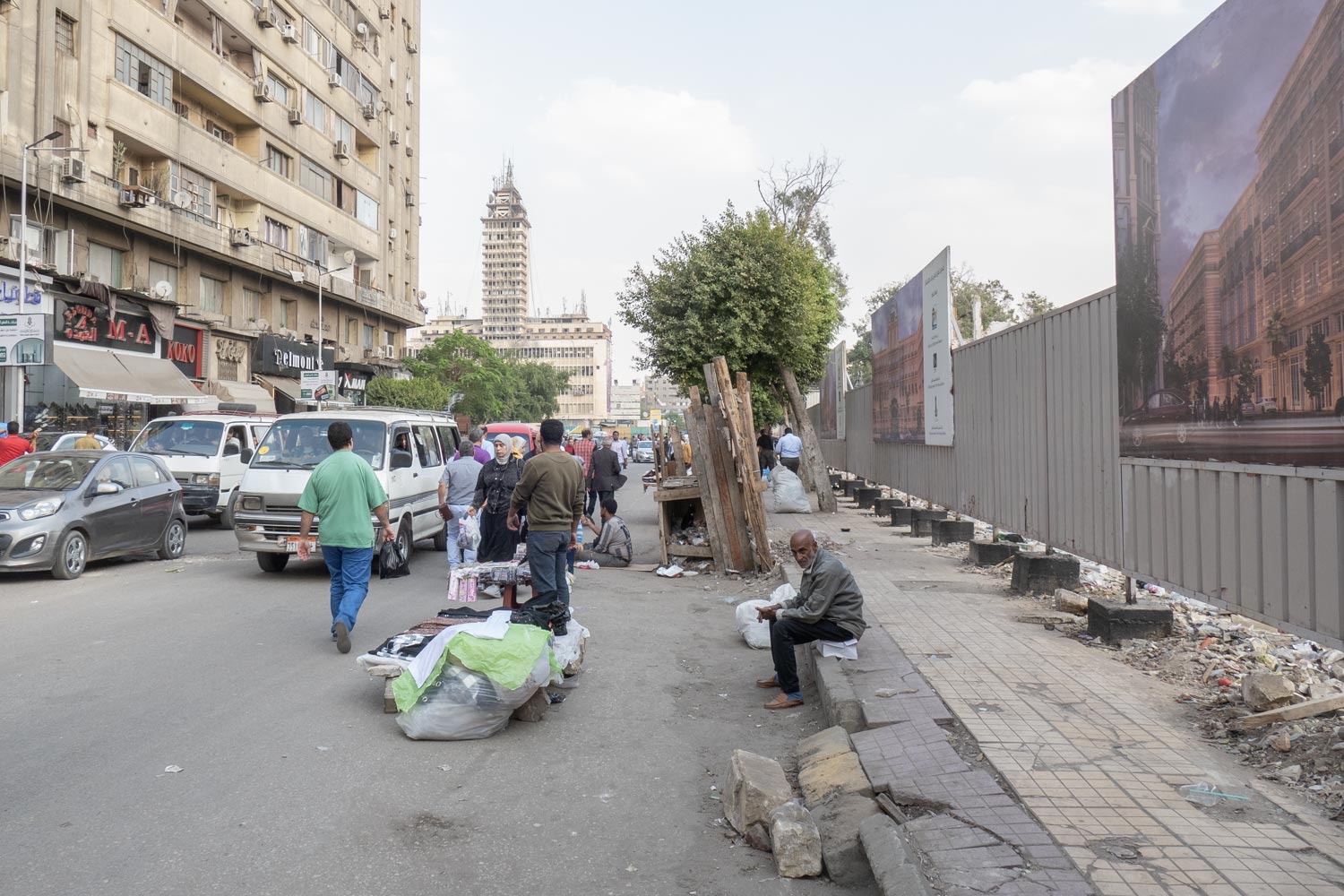
Having dealt with expanding the sidewalks, Cairenes moved on to extending living spaces. Right on top of classic architecture, new high-rises were erected by Cairo’s builders, seemingly with dirty walls from the start.

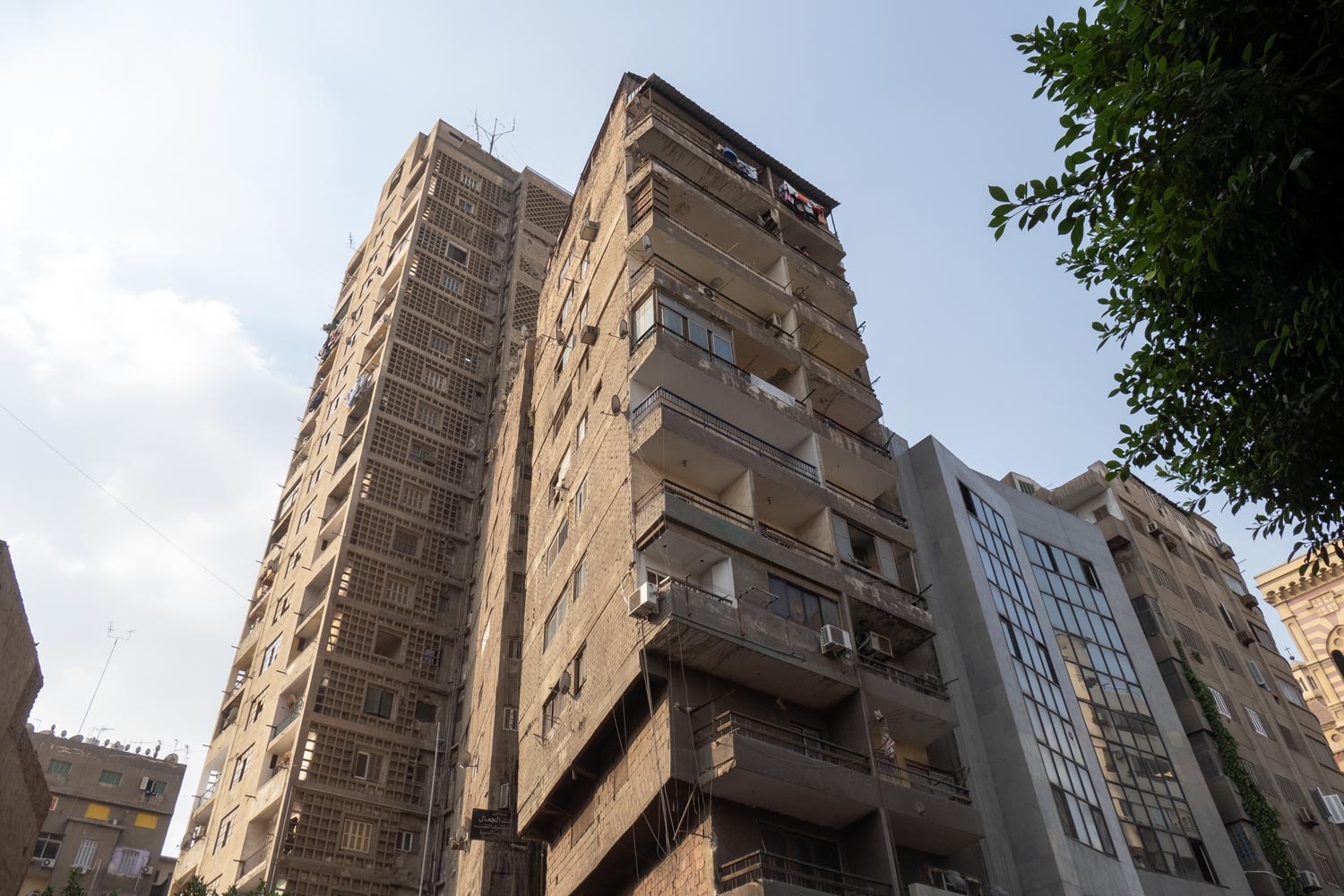

As a result, Cairo has turned into an unimaginably messy place. Sometimes you walk around and wonder: how do people even live here?
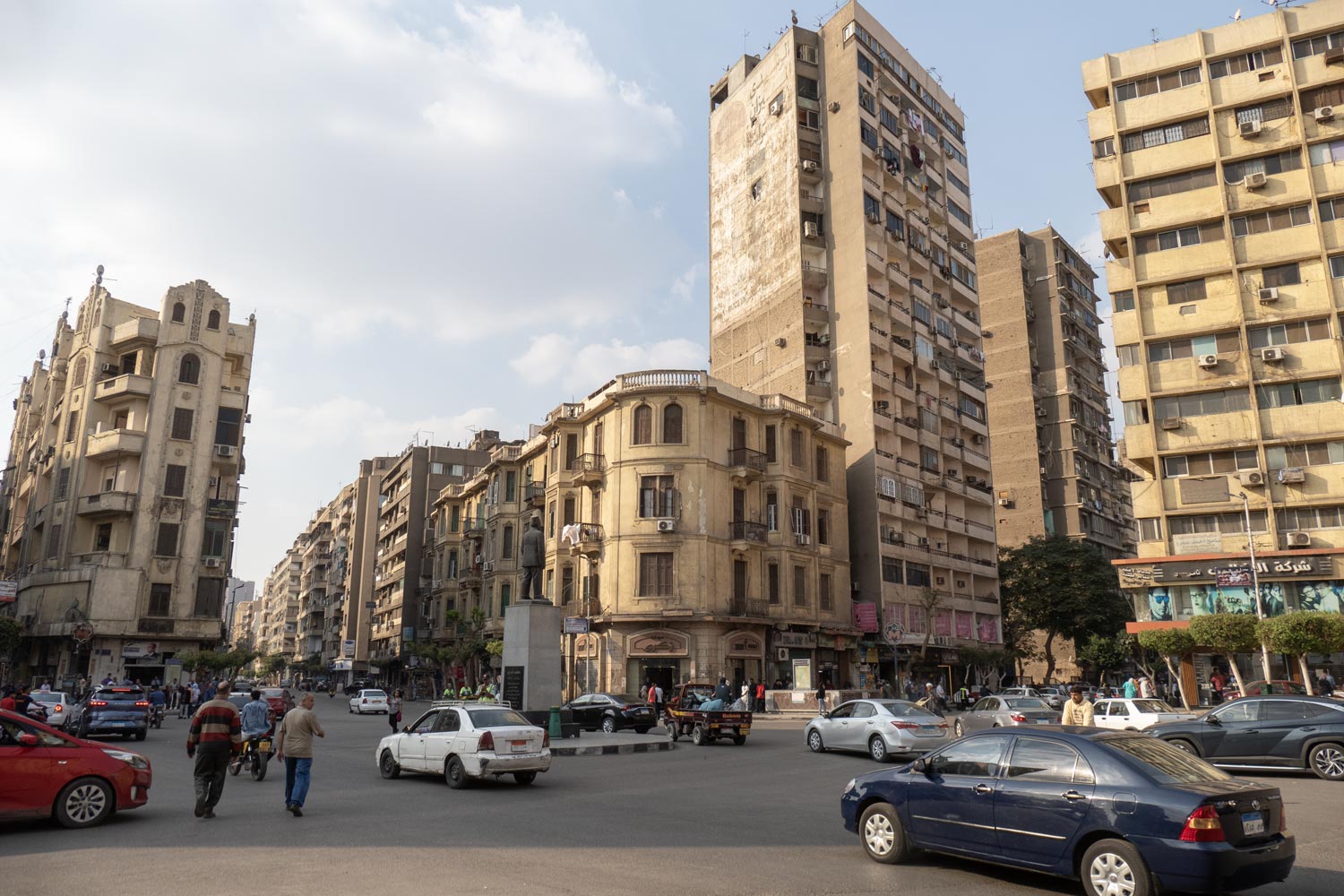
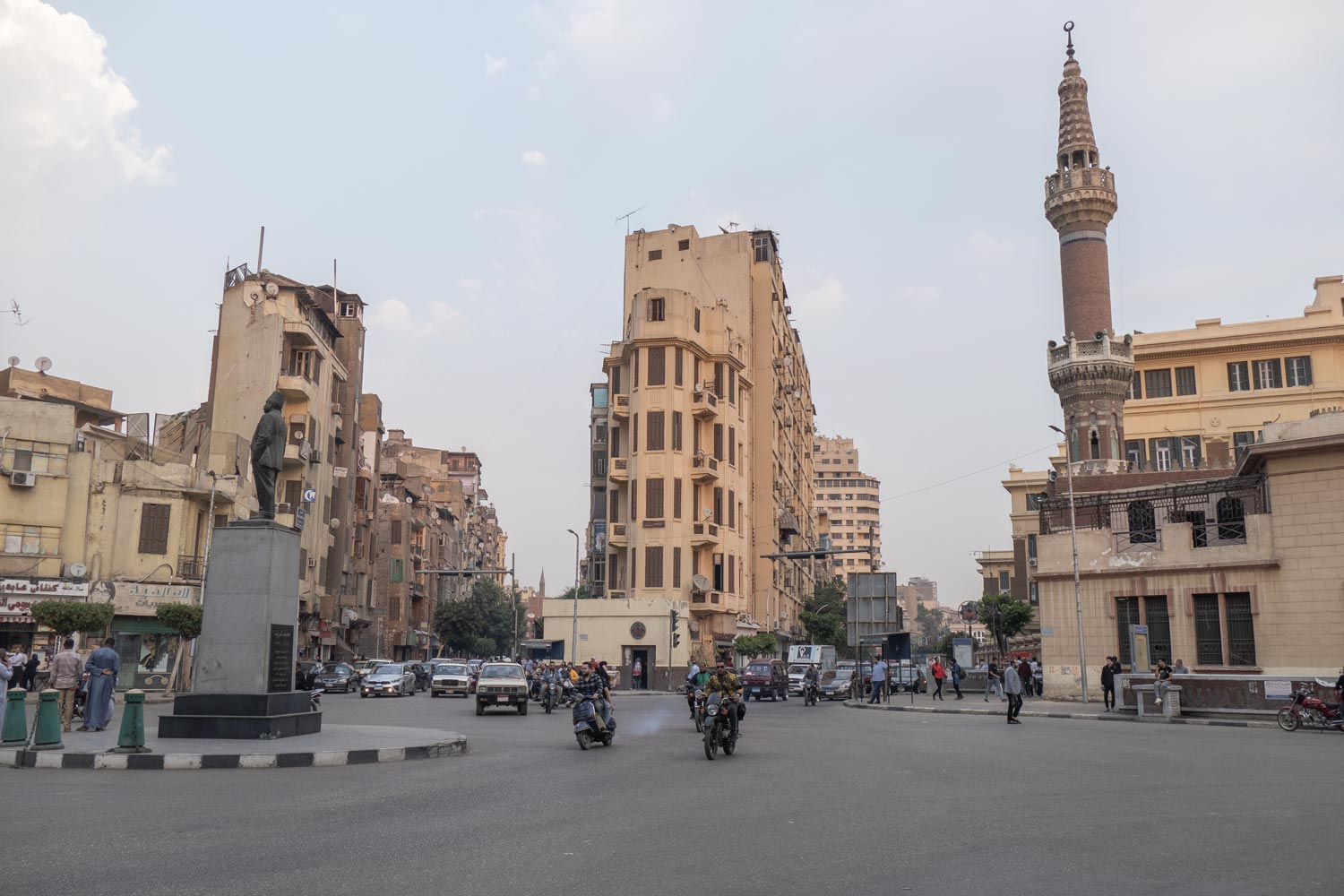
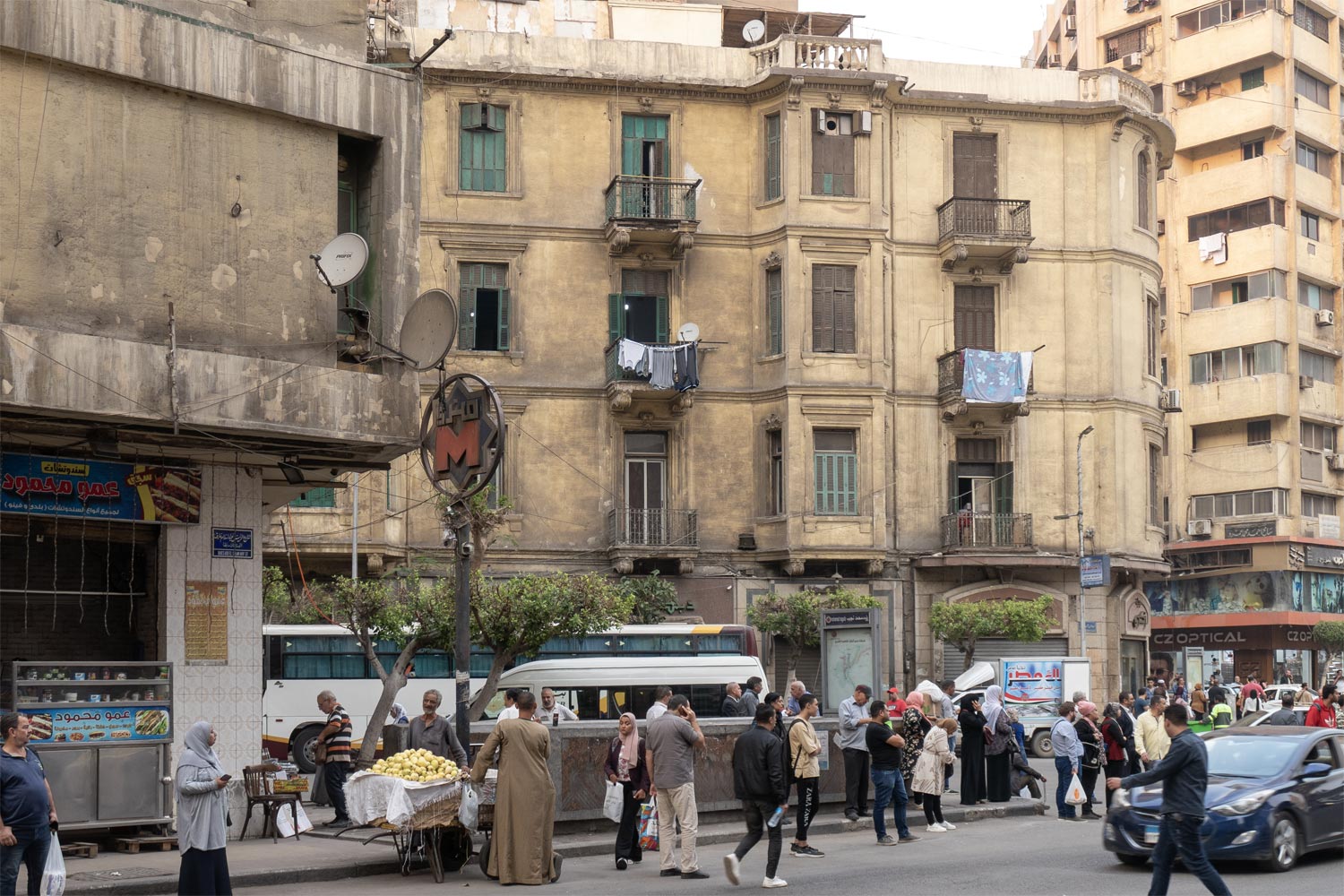
Here’s how they live. It turns out that many floors of these “skyscrapers” are occupied by shops and cafes. So a person enters an ordinary multi-story residential building, takes the elevator to, say, the fifth floor, steps out — and finds themselves in a clothing store!
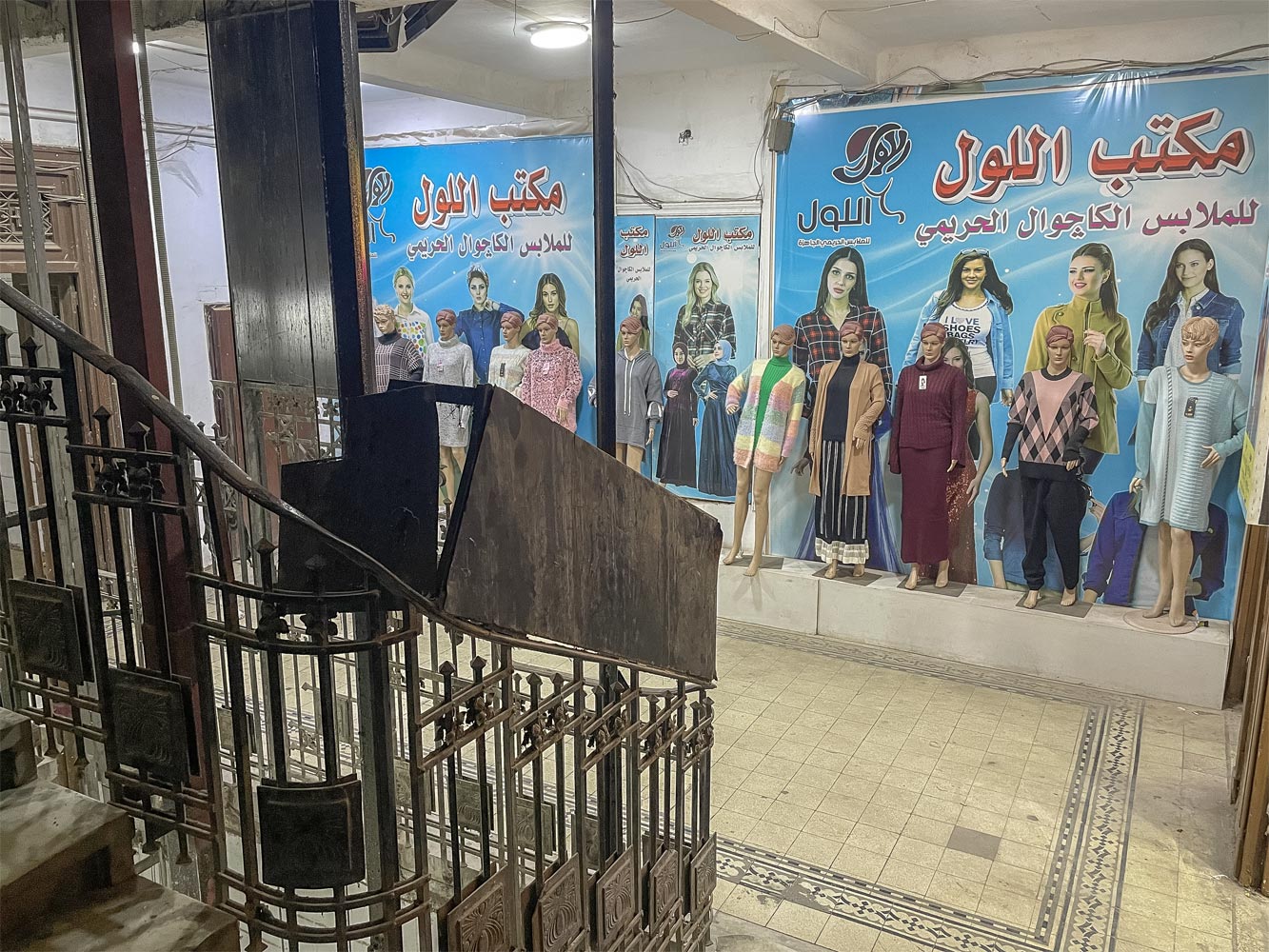
If you go up to the tenth floor in the same building, the door to one of the apartments might be open, and inside, instead of rooms, you’ll find a café or restaurant. Such a café might even have a terrace set up right on the balcony. The balcony, of course, offers a wonderful view — of the neighboring building.
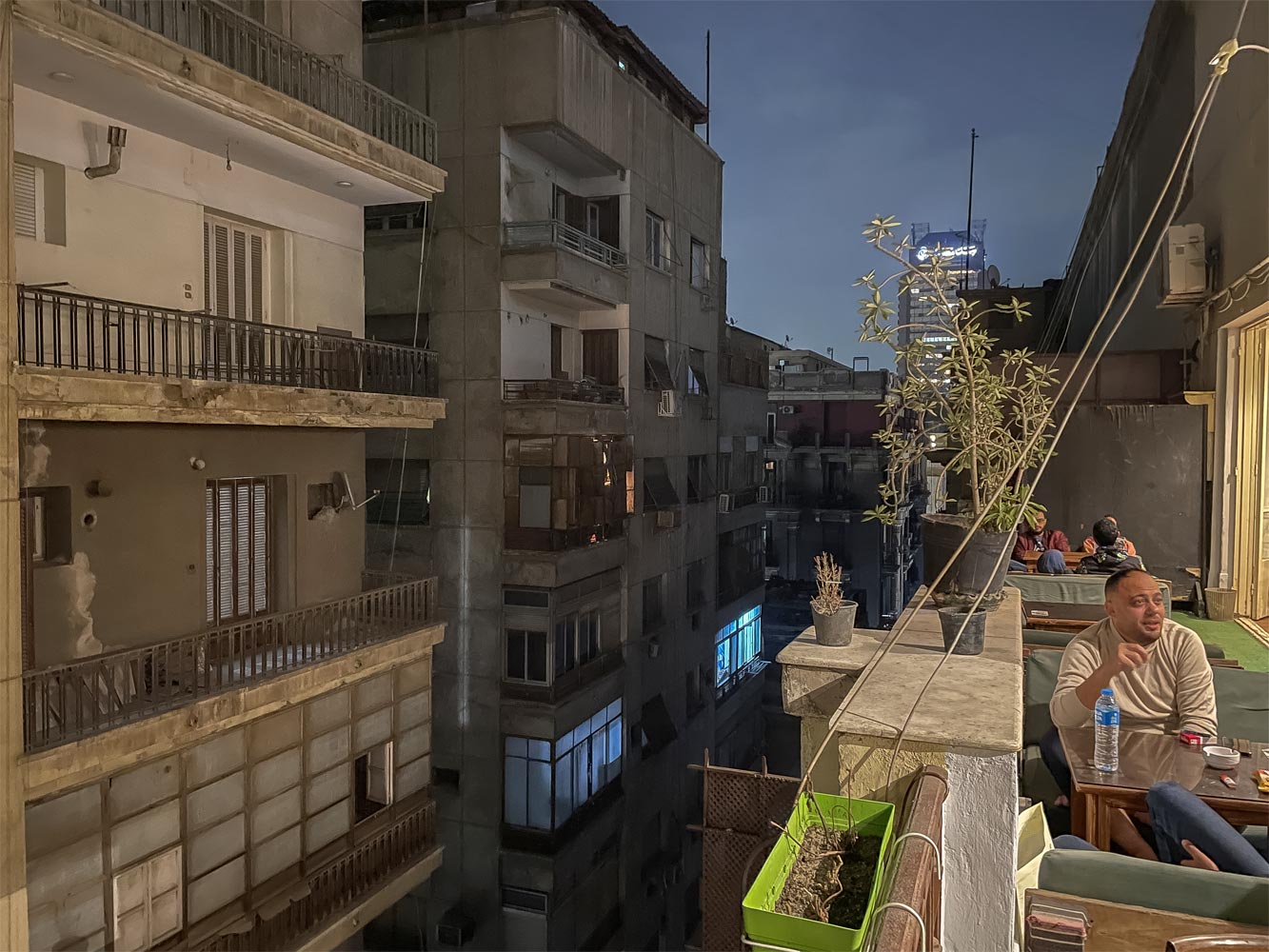
What a lovely place to spend a romantic evening, especially if you live in the same building. Just make sure not to look into the gap between the floors.
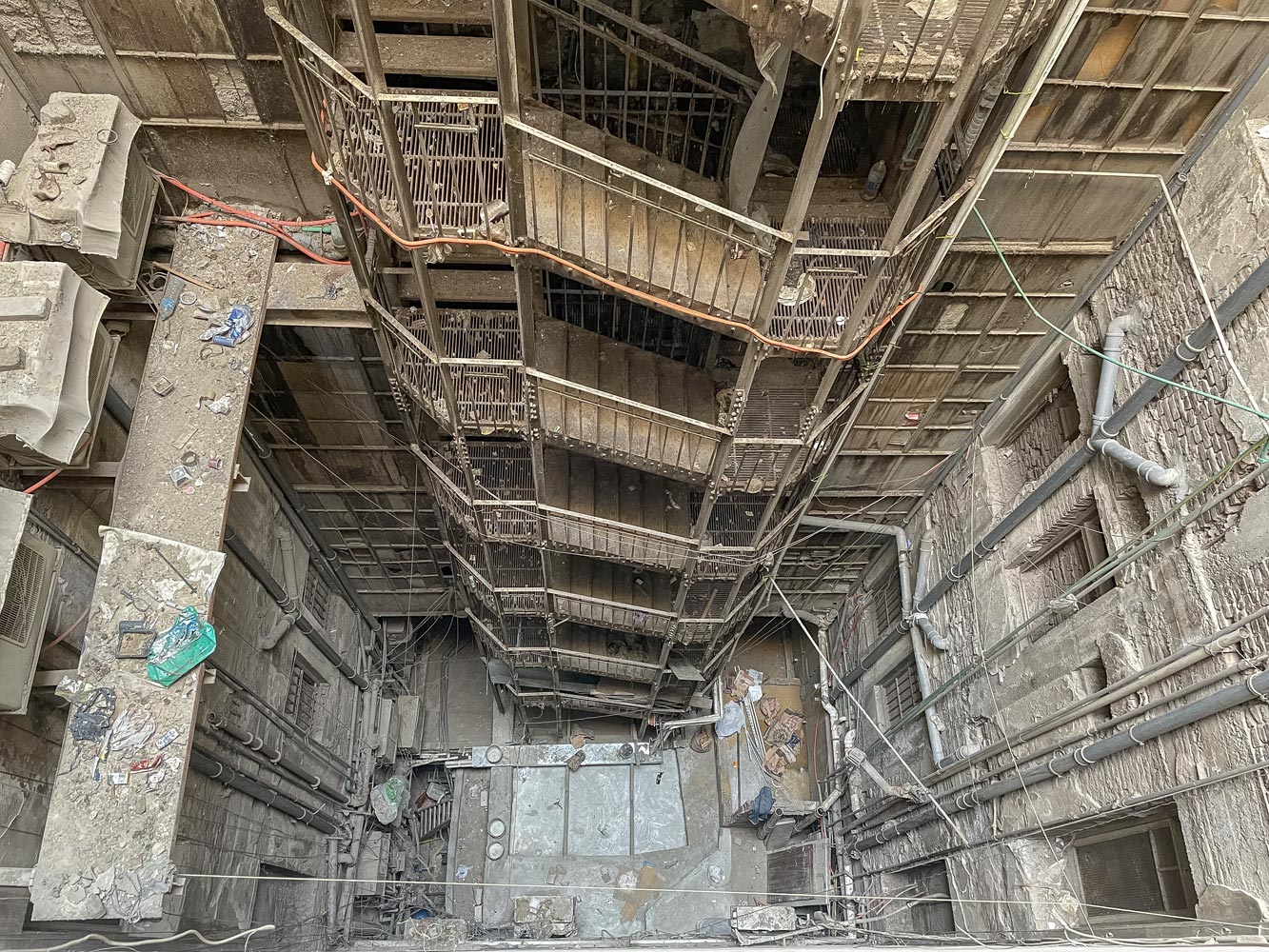
And what’s happening on Cairo’s roads! There are no rules at all. Cars drive however they like, and pedestrians cross the road wherever they please. And every single driver is constantly honking. The noise is so loud that it’s impossible to sleep at night without earplugs. Cars honk 24/7, without a break.
Truly, the cleanest place in Cairo is underground.
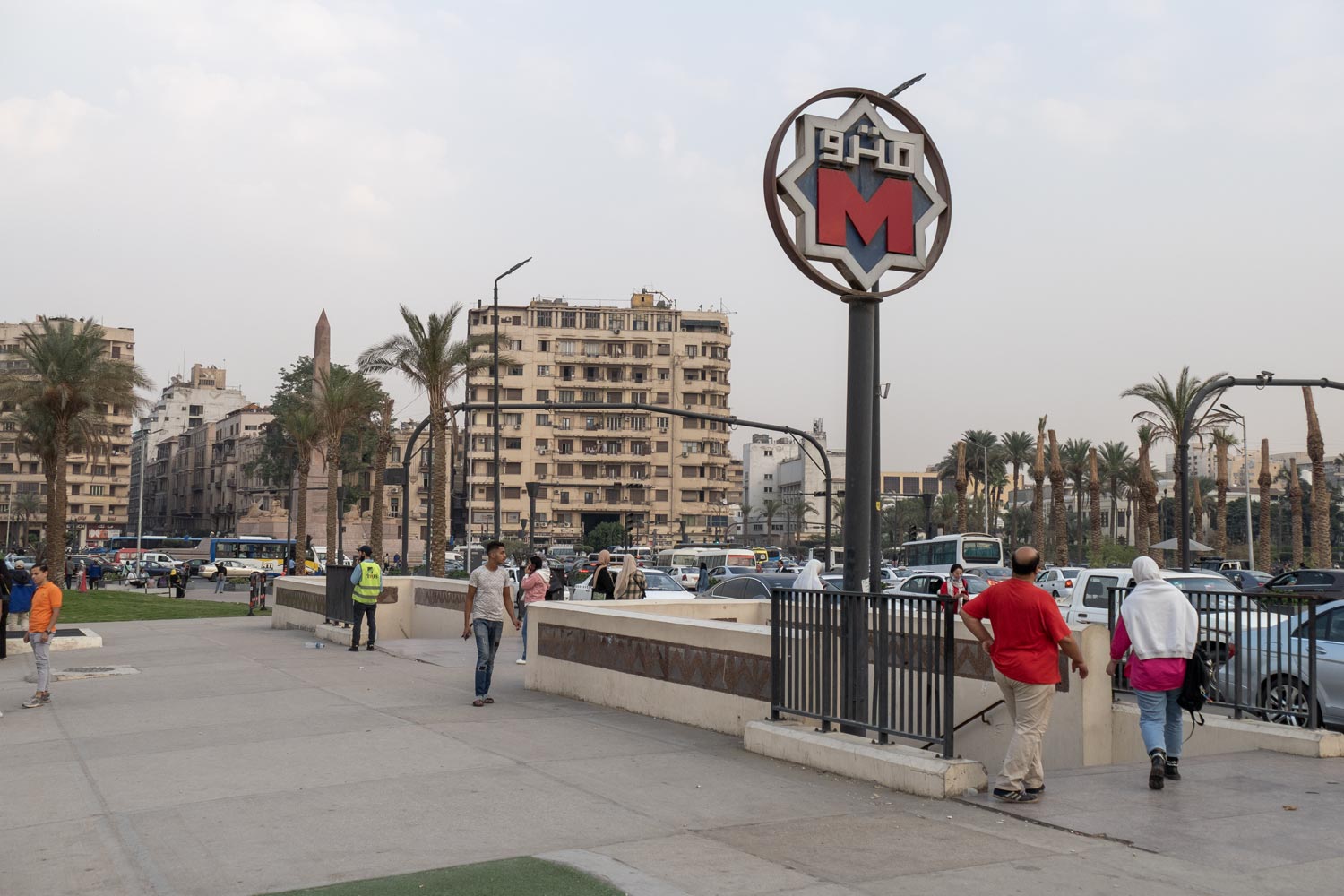
The Cairo metro is like a portal to a parallel world. Traveling around the city by bus is impossible due to constant traffic jams. And there aren’t any decent buses; Egyptians use minibusses. But the metro is quite nice, comparable to Istanbul’s. The trains even have separate carriages for women. This is very relevant in Cairo, where every other man seems to feel it’s his duty to shout something at passing women.

By taking the metro and transferring to a bus, you can more or less make your way out of the city center to reach Cairo’s iconic site — the Citadel of Saladin. This citadel was built way back in 1183 by the military leader Salah ad-Din, known for recapturing Jerusalem from the Crusaders and uniting Egypt, Syria, Yemen, Palestine, and part of Iraq.
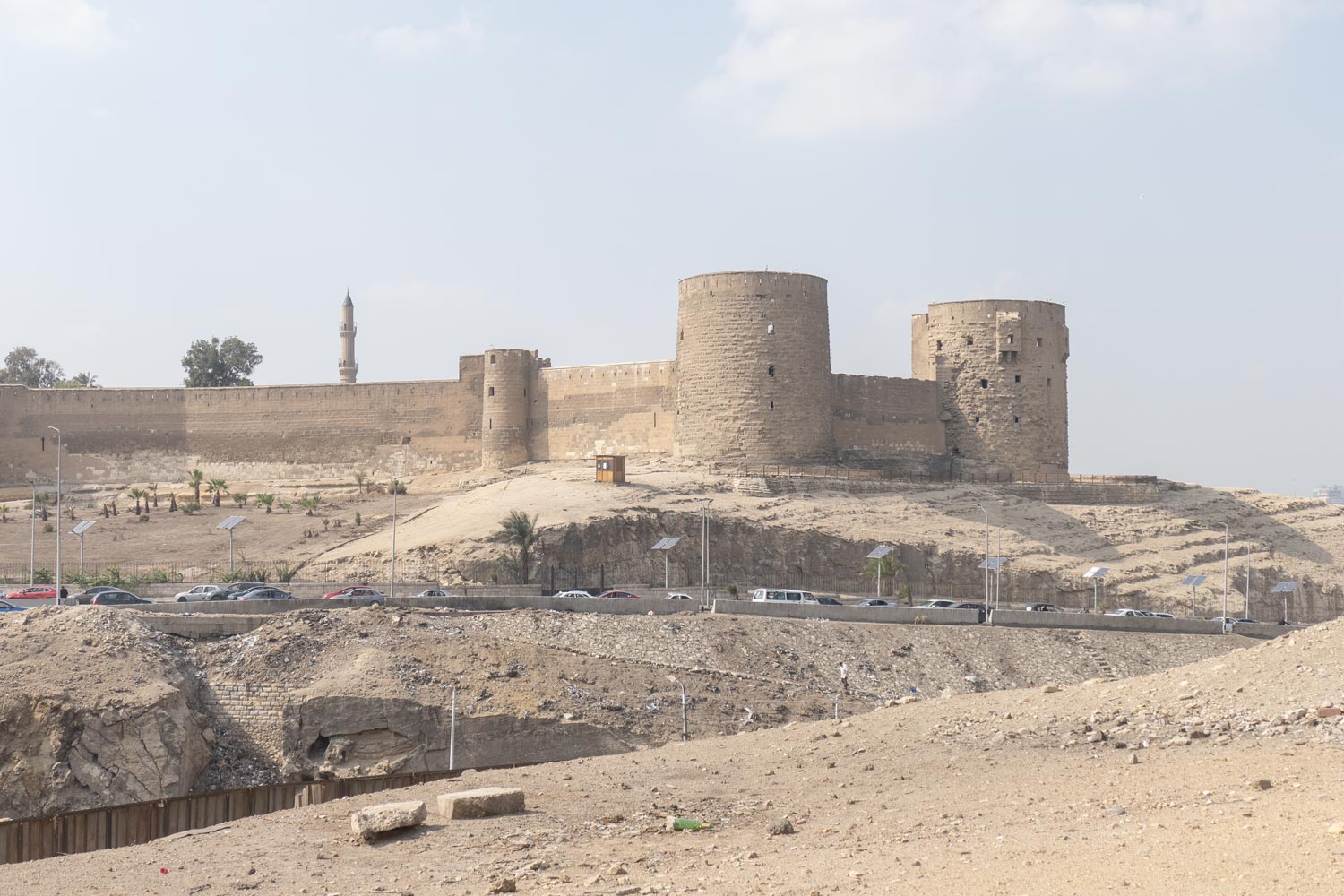
The citadel is part of UNESCO’s heritage. However, aside from the fortress walls, little has survived since the 12th century. For example, this tower was built in 1525, when Egypt was part of the Ottoman Empire.
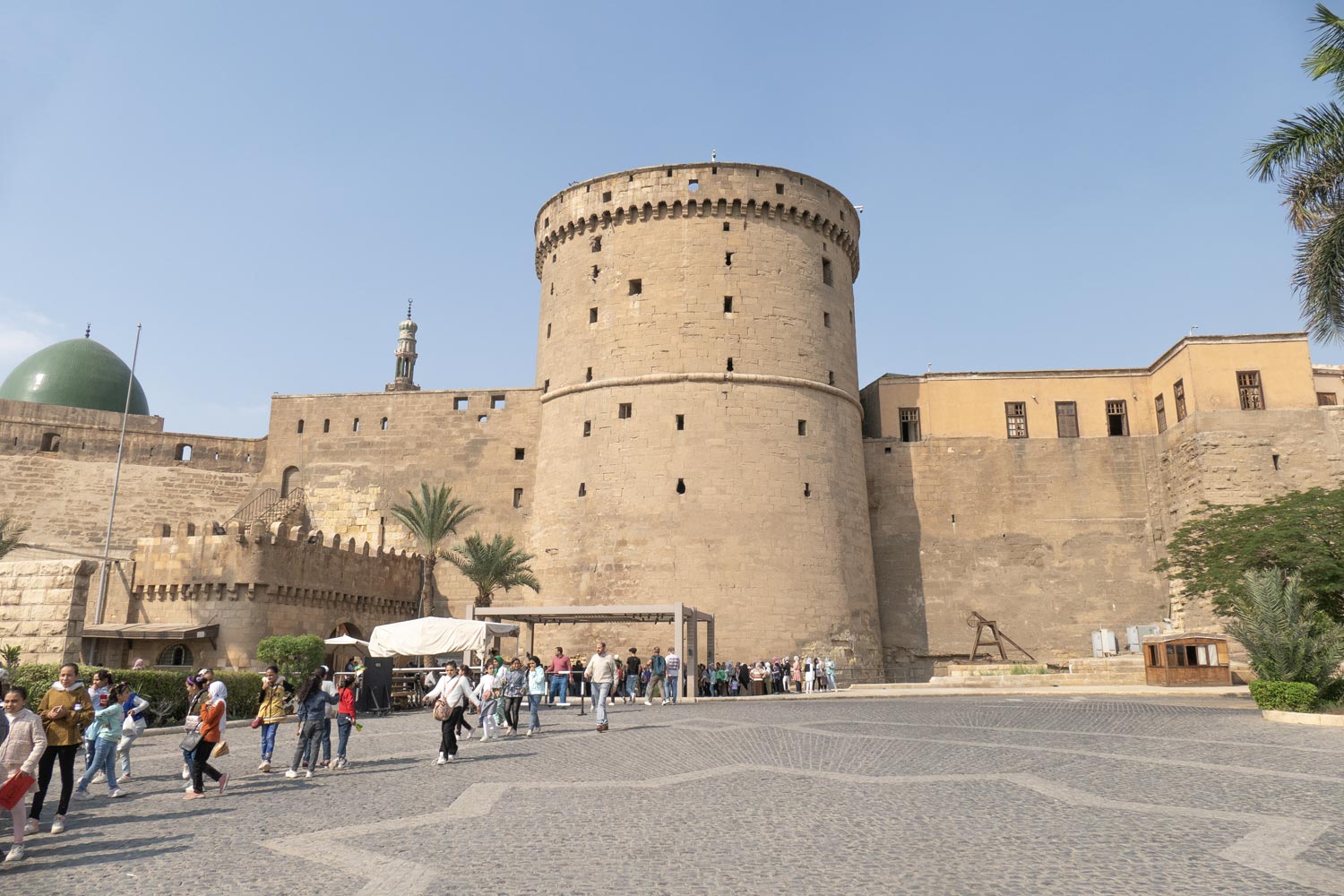
And this mosque at the highest point of the citadel is from the mid-19th century.

It’s probably the most beautiful place in all of Cairo. If not the only one.
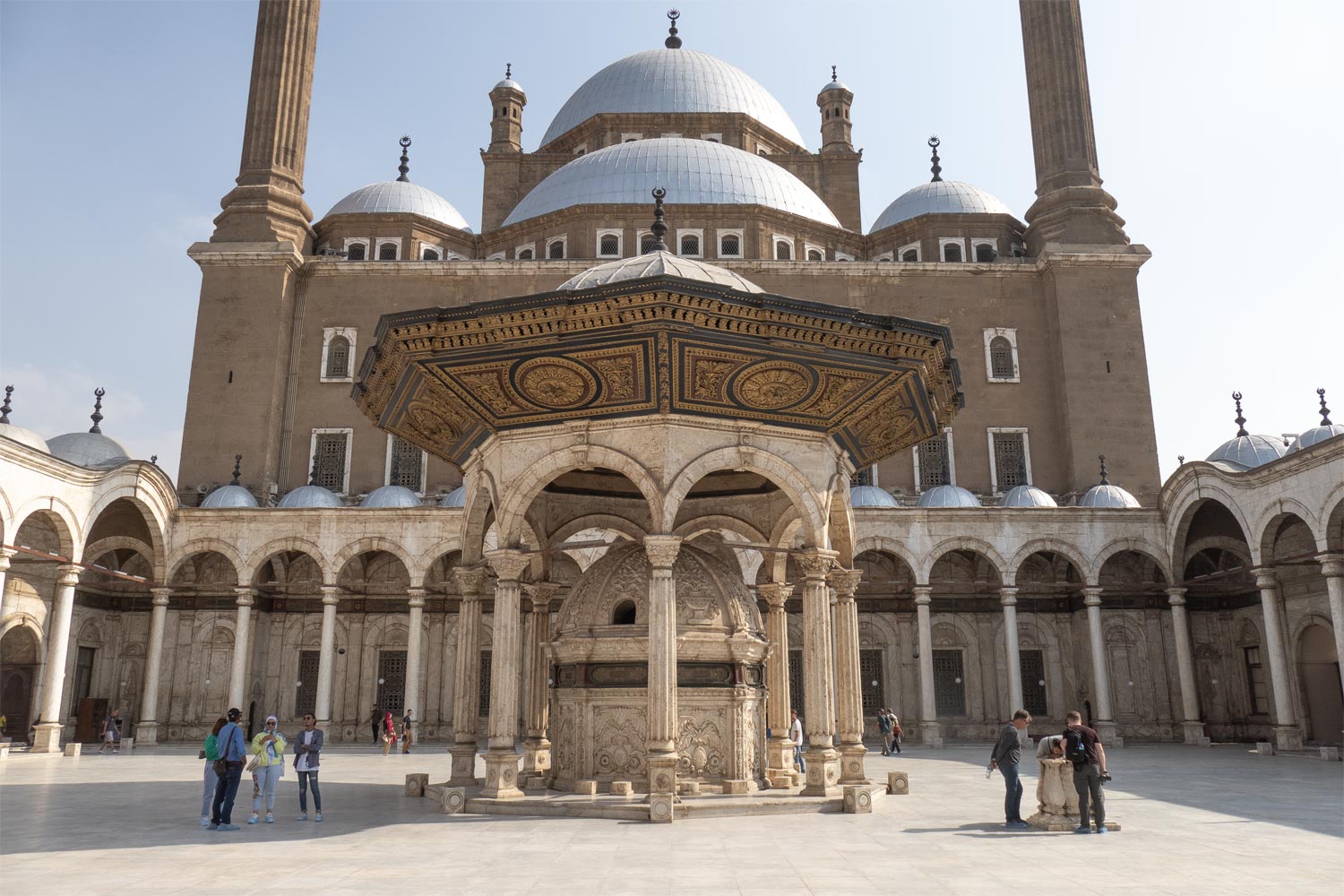
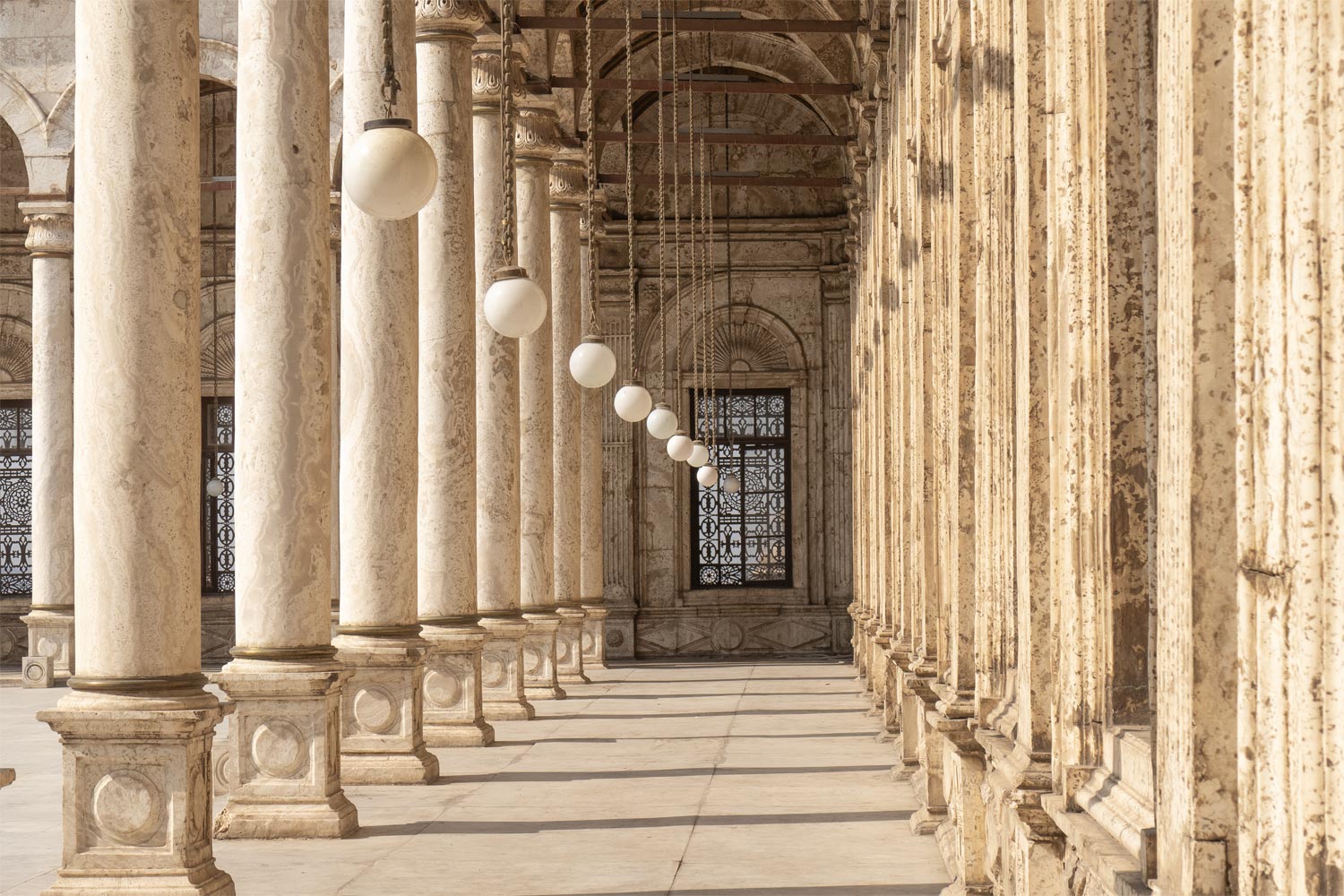
The citadel is situated on a hill, so it offers a wonderful view of Cairo.
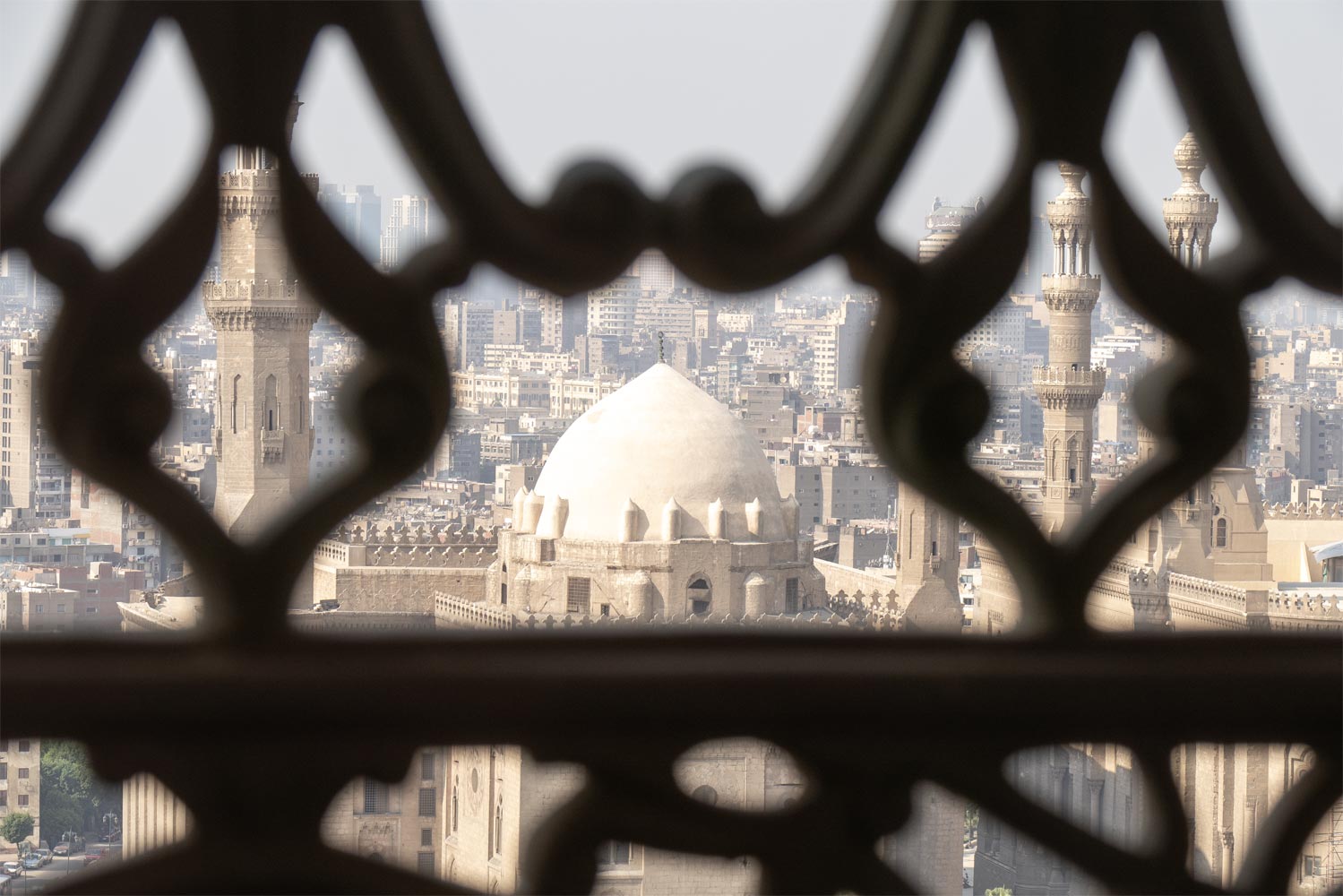
I almost said “wonderful.” Yes, from the citadel, you can see one of the oldest mosques in Cairo — the Mosque of Sultan Hassan, built in 1363. It truly is a beautiful piece of antiquity.
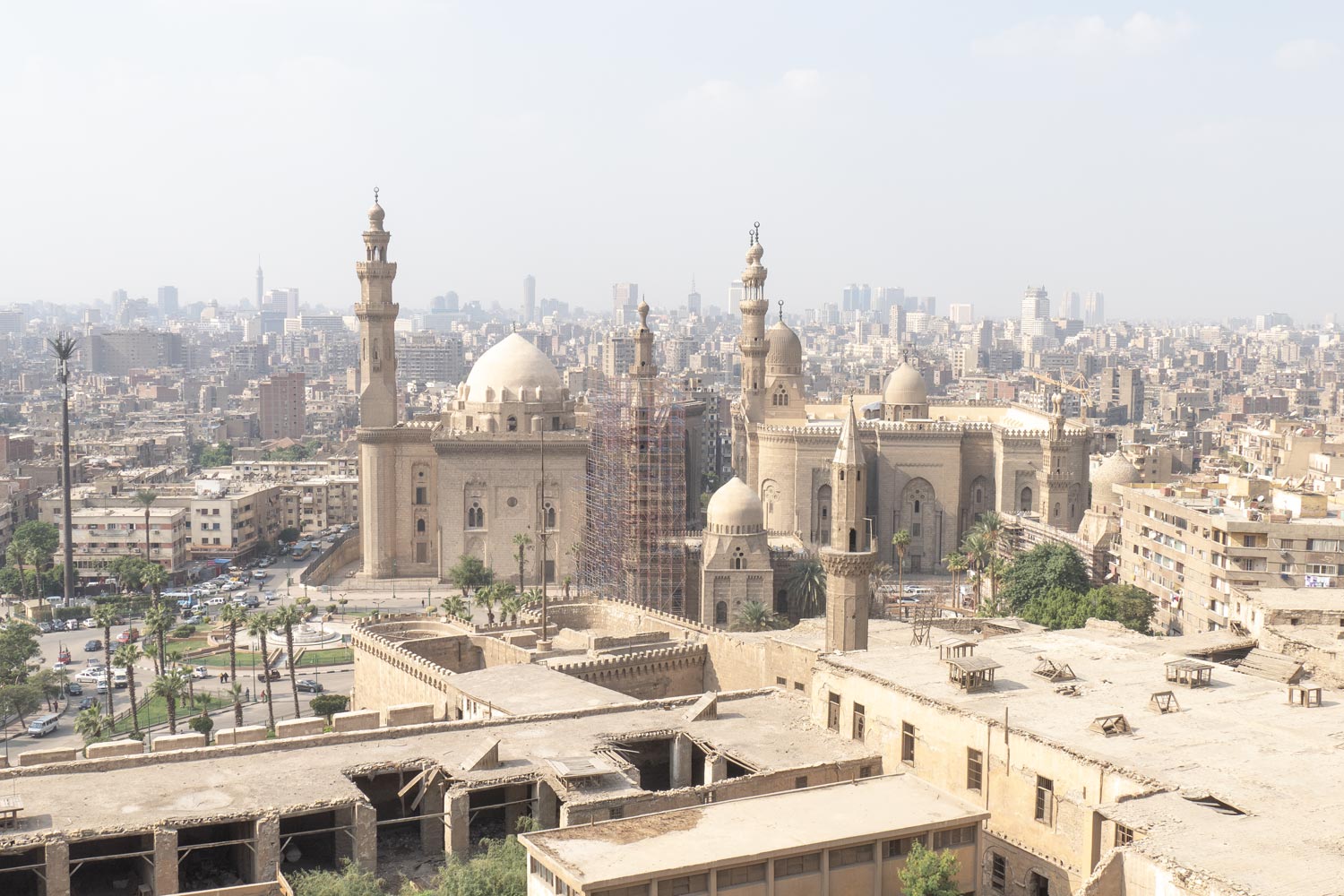
But what lies behind it? The mosque seems to shield the view of the completely dilapidated, shabby, miserable neighborhoods of Cairo. This view resembles Baghdad after a bombing more than the capital of a “tourist country.”

Most of the buildings lack any facade cladding. The brick walls aren’t even plastered, giving the impression of abandoned houses. Many windows are boarded up, while others are framed by dilapidated wooden shutters.
On the rooftops, you can see makeshift structures cobbled together from who-knows-what; they seem to be made of straw mixed with clay. Believe me, this is far from the worst housing in Egypt. We’ll get to the worst later.
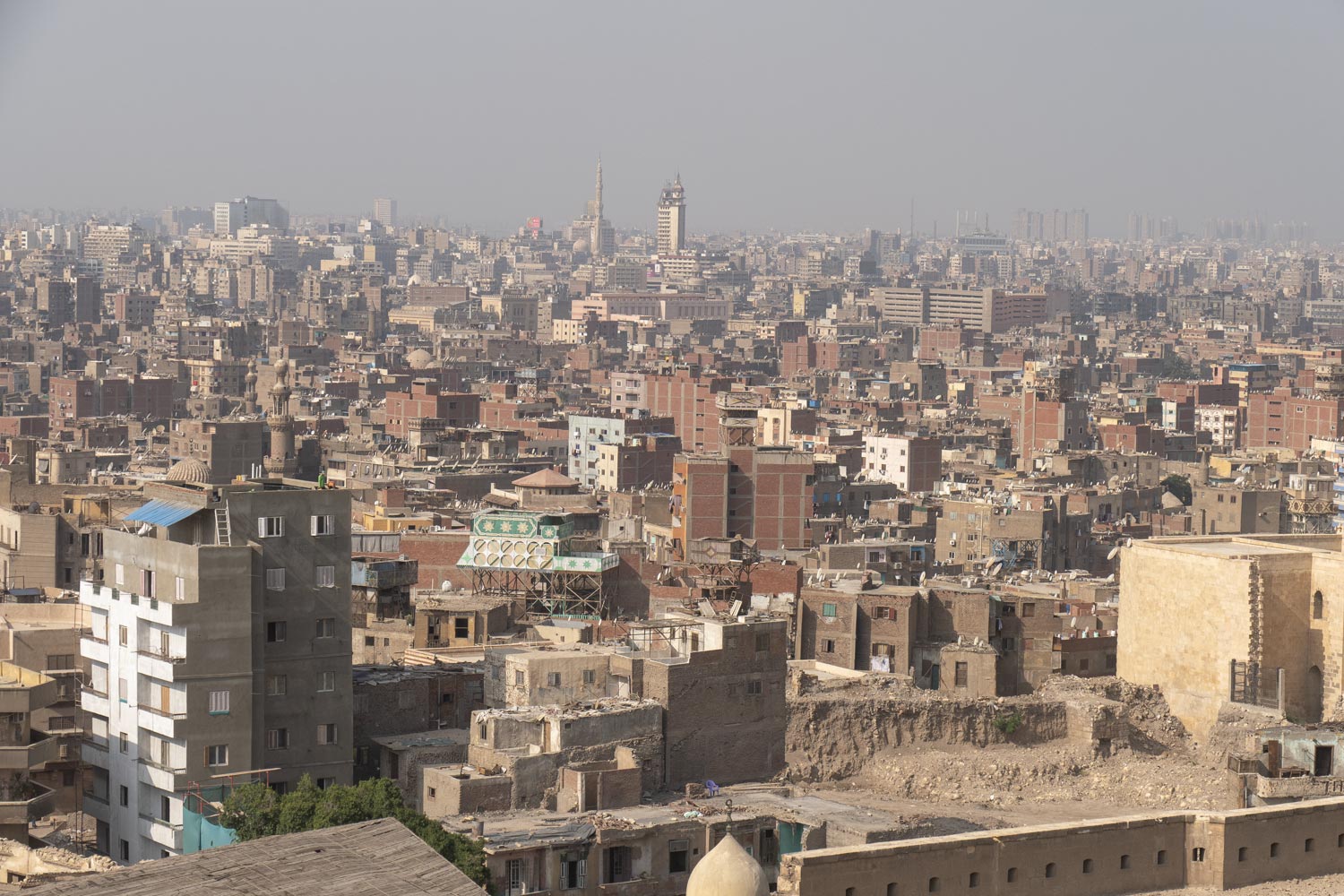
In addition to the beautiful mosque, there is a military museum on the grounds of the citadel. However, the museum is not dedicated to the Egyptian ruler Muhammad Ali, who rebelled against the Turkish sultan.

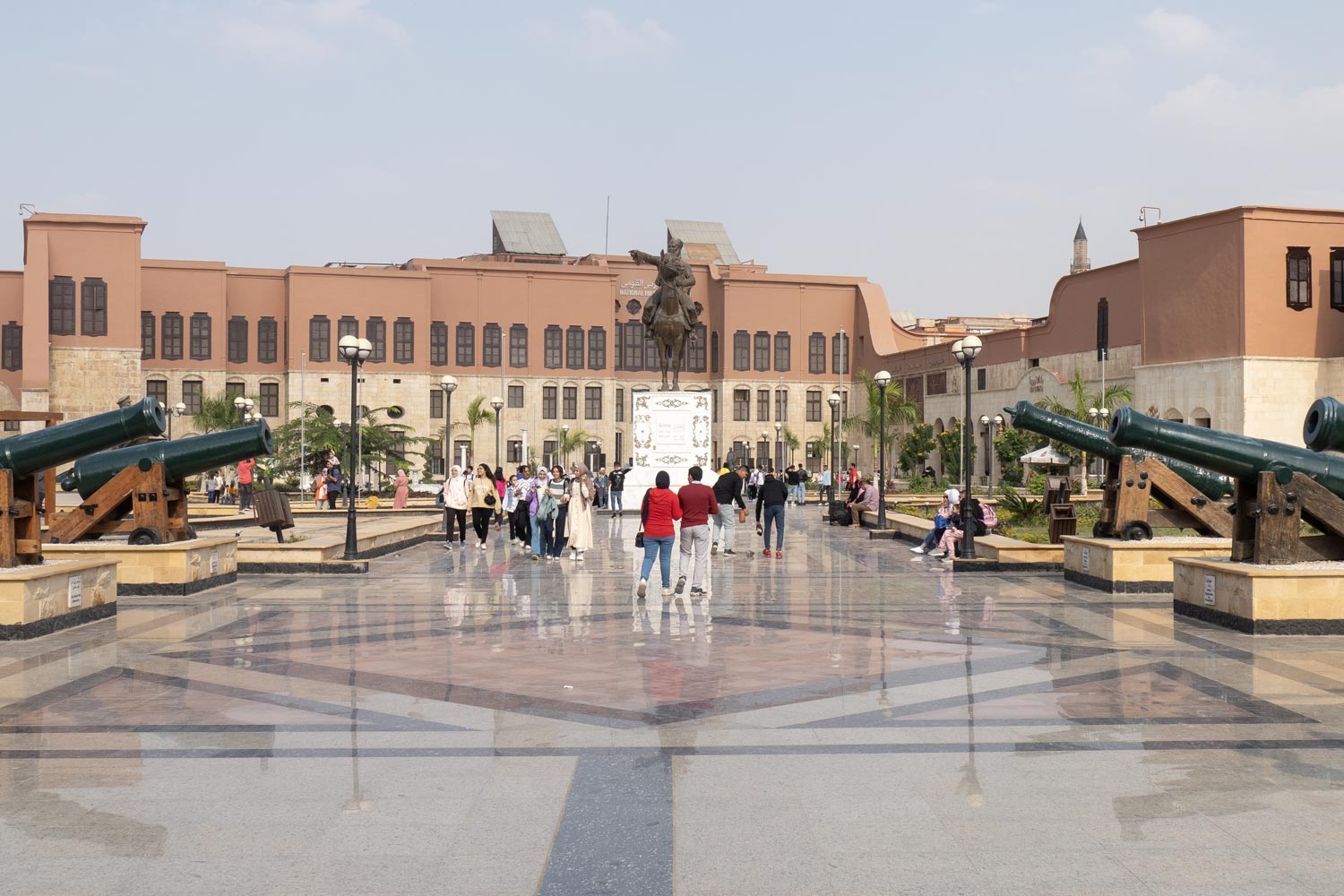
Oh no, the main theme of this museum is Egypt’s war with Israel.
Here’s what happened. In 1952, a revolution took place in Egypt, resulting in the Egyptians overthrowing the king. Inspired by their success, four years later Egypt decided to seize the Suez Canal, which was owned by a joint private company from France and the United Kingdom.
France and the United Kingdom, of course, didn’t like this turn of events, so they launched a special military operation against Egypt, and to intimidate it further, they asked Israel to join in.
The intimidation worked: within nine days, Israel had occupied almost the entire Sinai Peninsula, and the French and British regained control over the Suez Canal. But the U.S. and the USSR were even more intimidated. It was during the height of the Cold War, and who knew how it could all end? So the two superpowers put their heads together and pressured Israel to return the Sinai Peninsula to where it came from and ensured the Suez Canal was handed back to Egypt.
In memory of this remarkable military victory, there is a painting in the genre of socialist realism in the Cairo museum, depicting Egyptian bombers flying towards the Suez Canal.
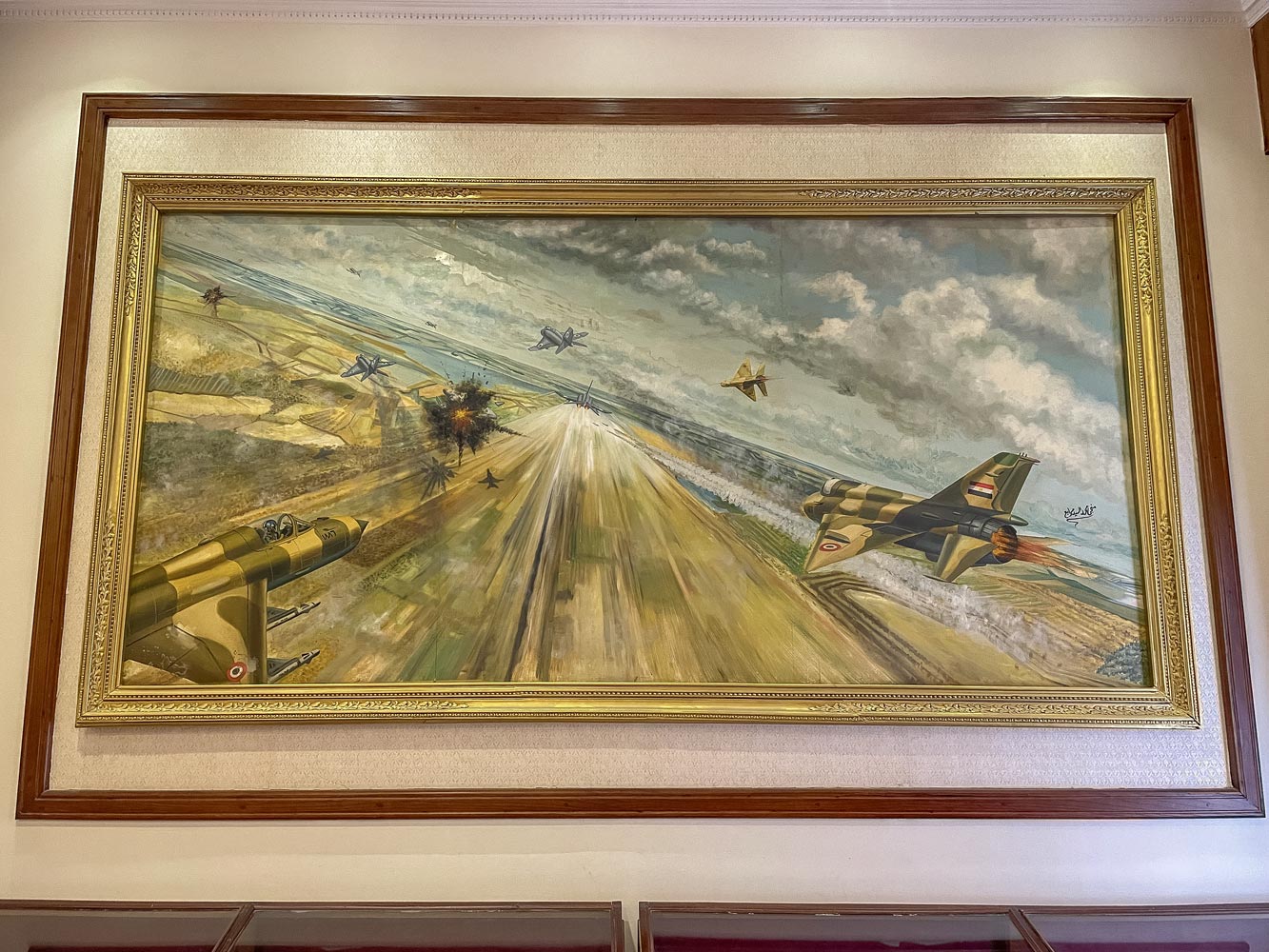
However, the matter didn’t end there. Just ten years later, in 1967, there was another military victory, no less significant than the previous one.
Having reached an agreement with Syria and Jordan, Egypt decided to join forces to “drive the Jews into the sea” and destroy Israel as a state. And they almost succeeded. On Monday, June 5, 1967, everything was going according to the Egyptian plan. Then something happened. Then by Friday, June 10, the Sinai Peninsula was completely occupied by Israel. Again.
There is no doubt that the Egyptians fought like beasts. Just look at the monument to the Egyptian soldier in the museum. Its mere appearance should have caused the Israelis both diarrhea and ejaculation simultaneously.
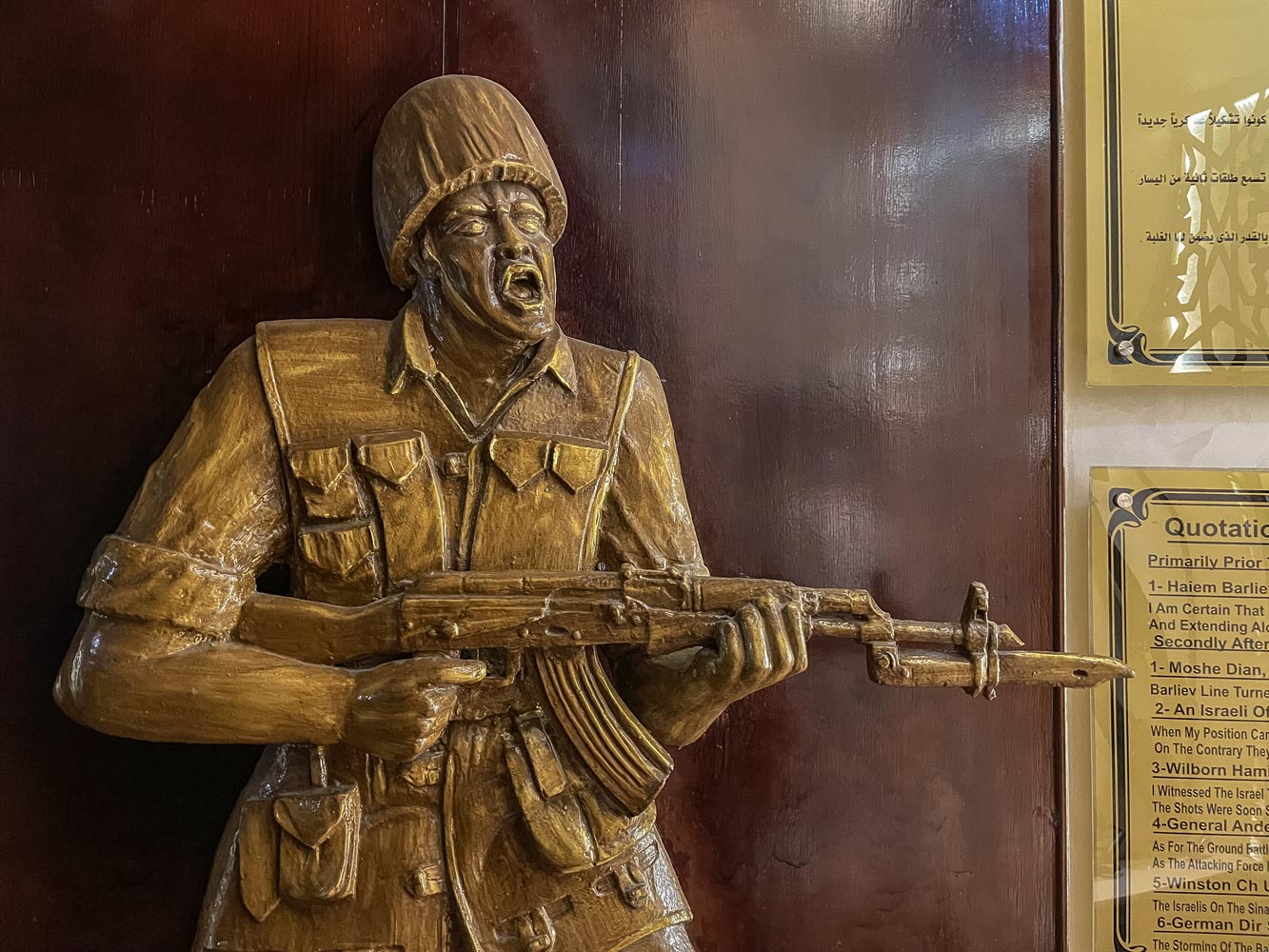
Nevertheless, in six days of war, Egypt lost 37,000 people — killed, wounded, or taken prisoner. Israel, on the Egyptian front, lost slightly fewer than 500. Not thousand. Just: 500 people.
Historians debate the reasons behind such a crushing defeat. According to one version, popular in Egypt itself, djinn fought on Israel’s side, rendering the prayers from the Quran powerless.
One way or another, this war went down in history as the “Six-Day War,” and the Sinai Peninsula was occupied by Israel not for a couple of months, but for a long 15 years. The unfortunate peninsula was returned to Egypt only in 1982 as a result of lengthy peace negotiations and with coaxing from the United States.
And Egypt... well, what about Egypt? Egypt once again went off to celebrate a remarkable military victory. The museum is filled with statues of jubilant soldiers.
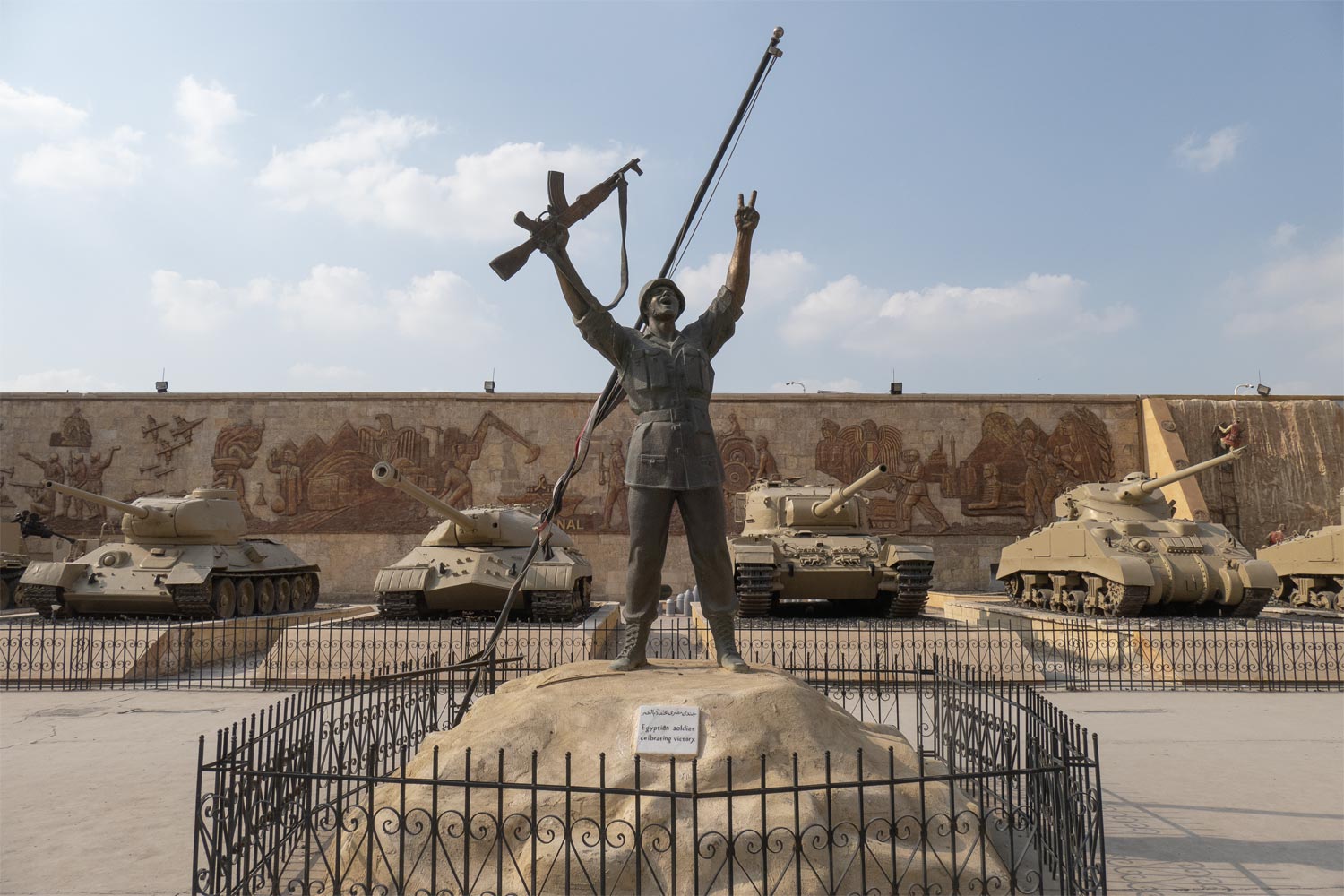
There’s an exhibition of military equipment.
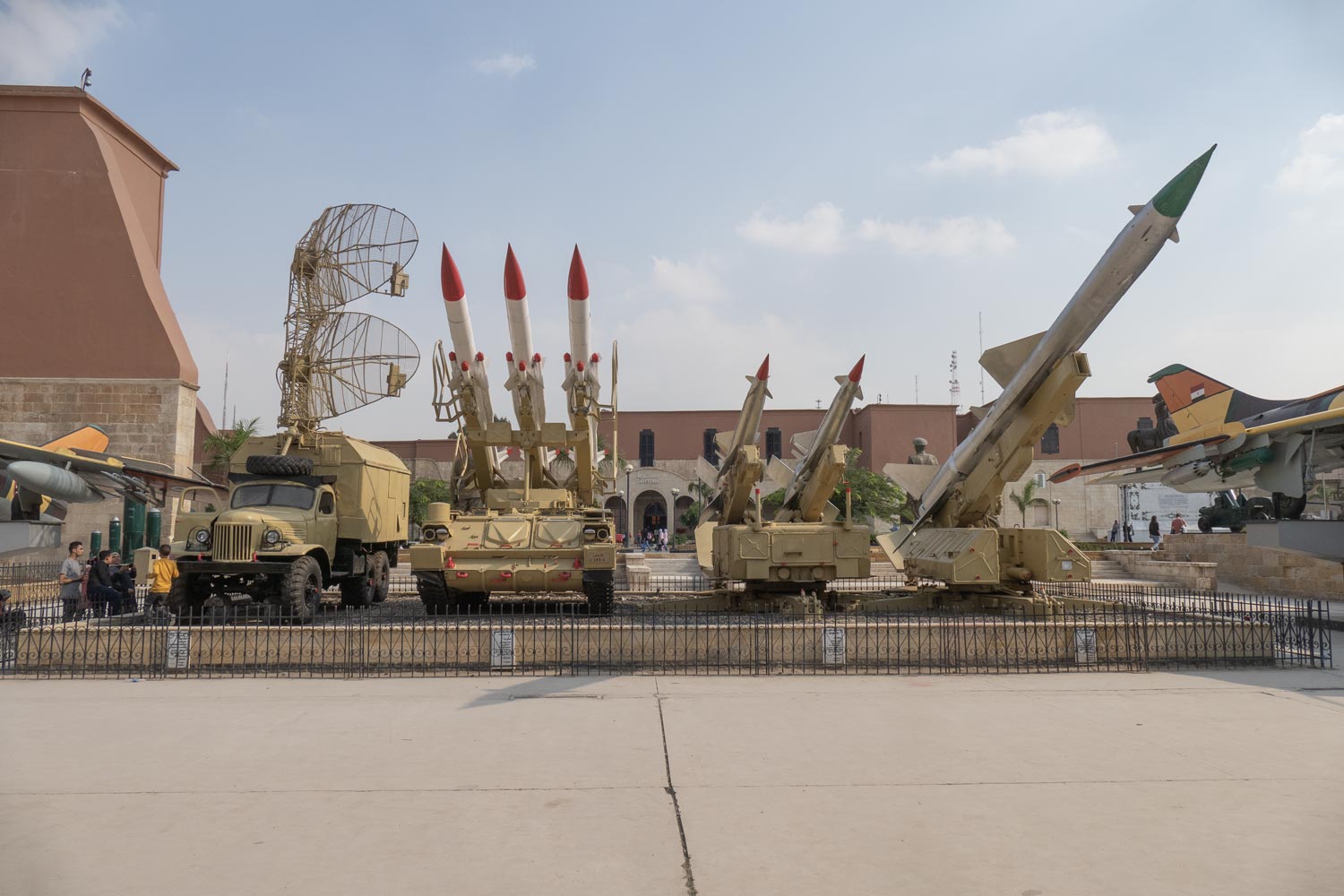
Children are happily taking pictures with weapons in their hands.
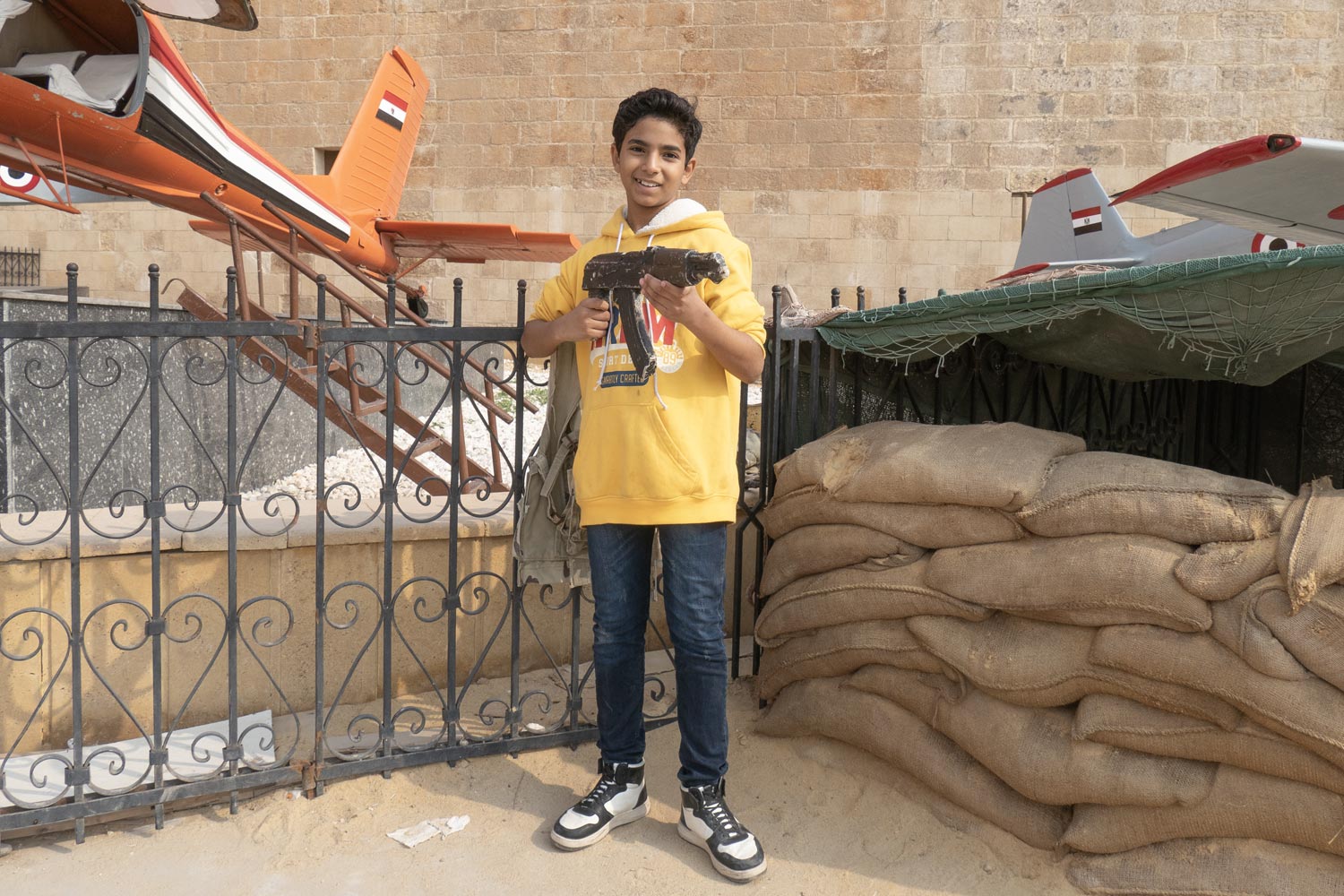
Artists paint pictures depicting MLRS attacking an imaginary enemy.
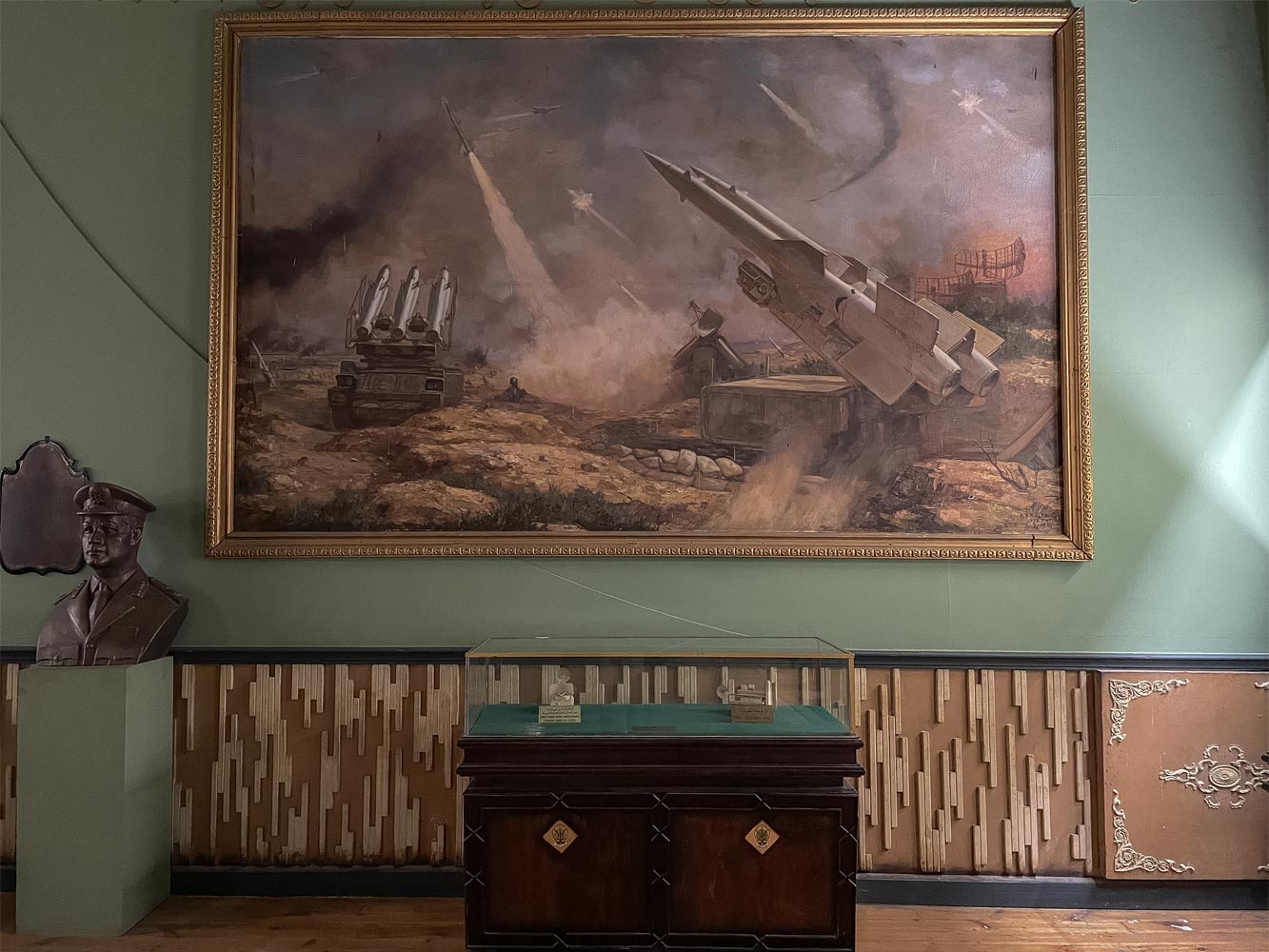
And the museum guide, in all seriousness, explains how Egypt defeated Israel and reclaimed the Suez Canal. Twice.
Giza
That’s not all. In fact, only the part of the city to the east of the Nile is considered Cairo. On the other side of the river is the city of Giza.
So, if you thought Cairo was a terrible city, then you haven’t seen Giza. Giza is not just a terrible city; it’s hell on earth. And it begins right after you exit the Giza metro station. The first thing a tourist sees is a monstrous gray building towering over a pile of garbage.
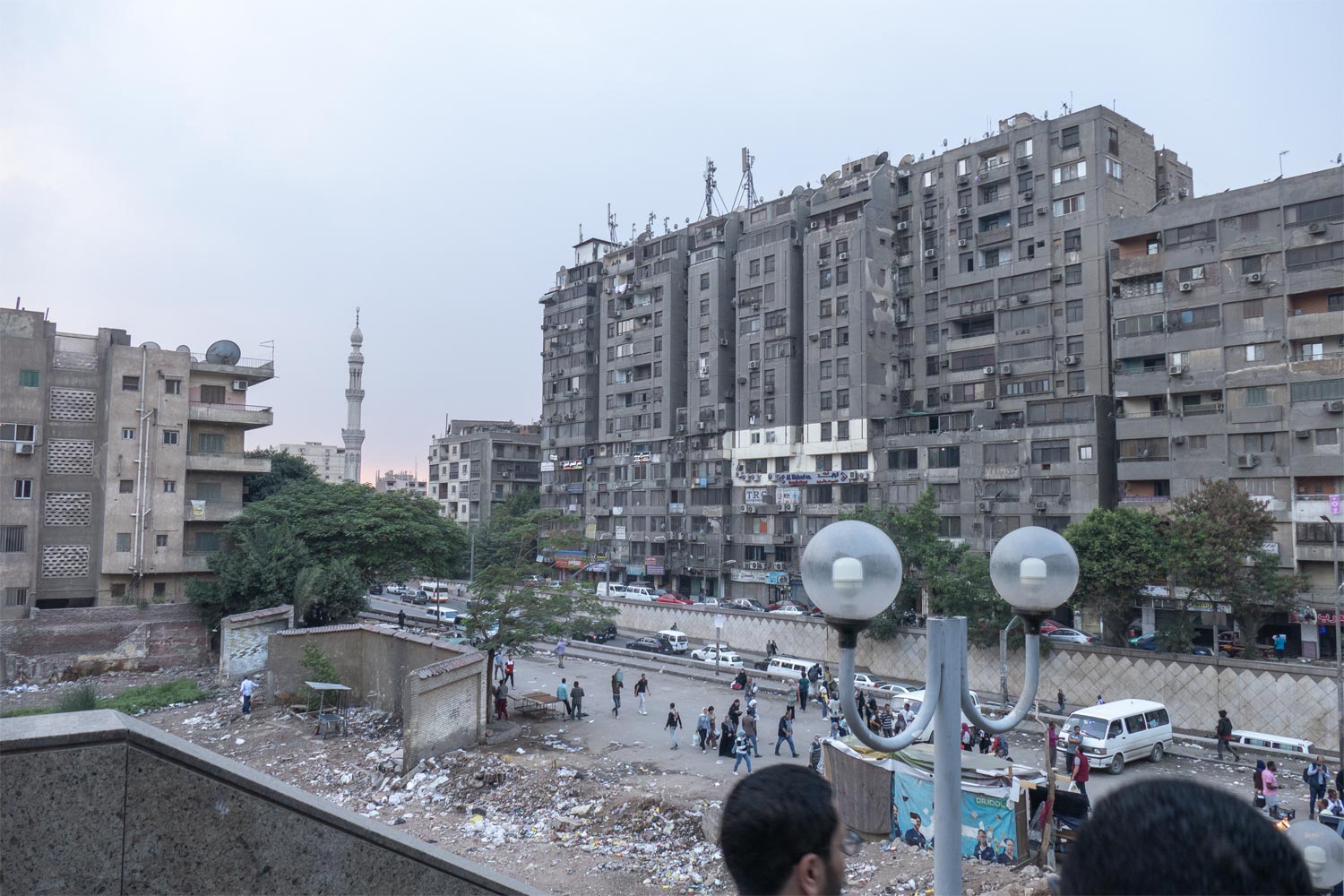
Yes, this is the same Giza after which the Pyramid of Khufu (the Great Pyramid of Giza) is sometimes named. So it’s not some slum but actually a major tourist destination. All travelers heading to the pyramids pass through Giza.
Giza is mainly built up with multi-story buildings, many of which are hotels. In others, apartments are rented out on Airbnb.
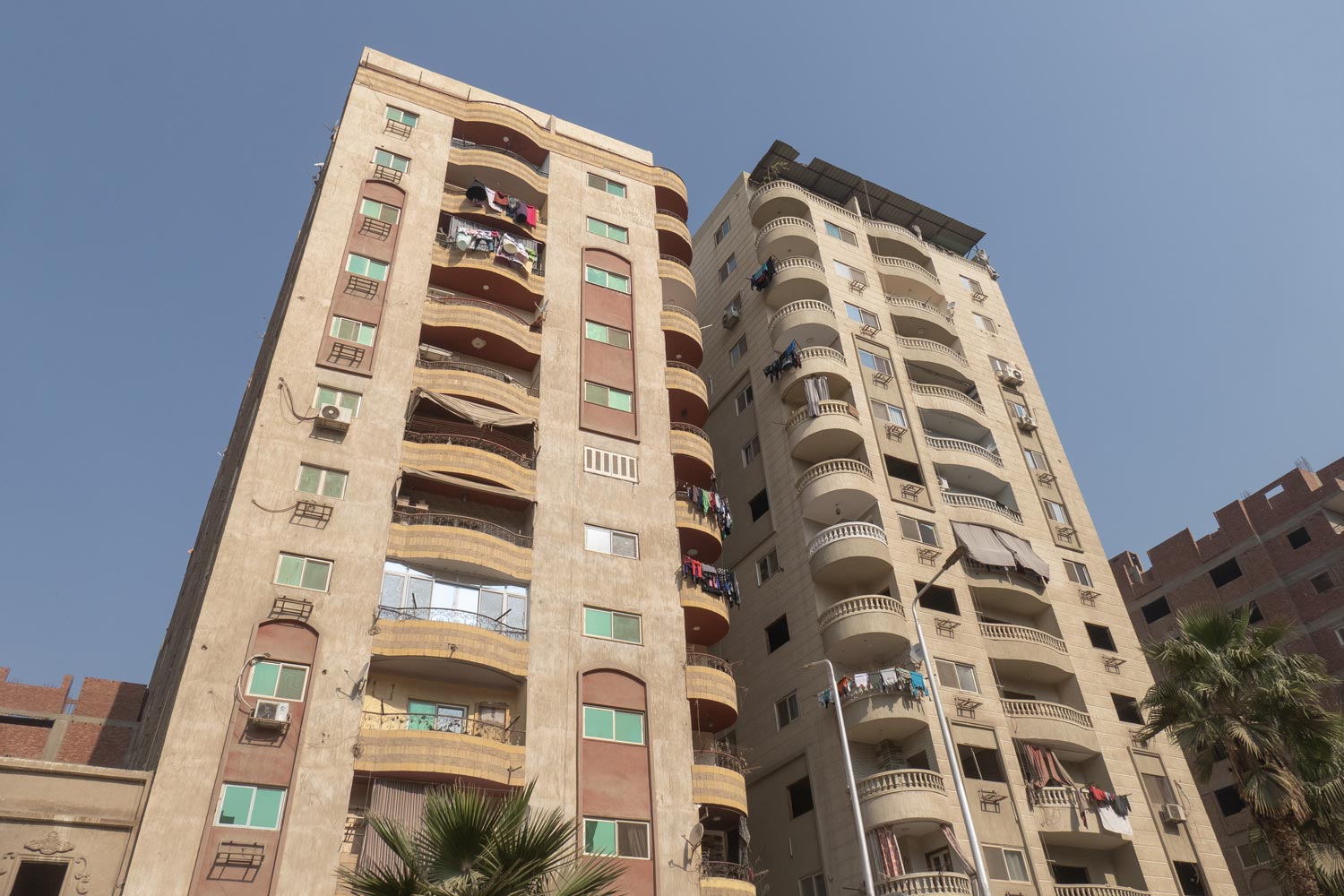
If the streets of Cairo still resembled a city, then the streets of Giza are reminiscent of an African village.
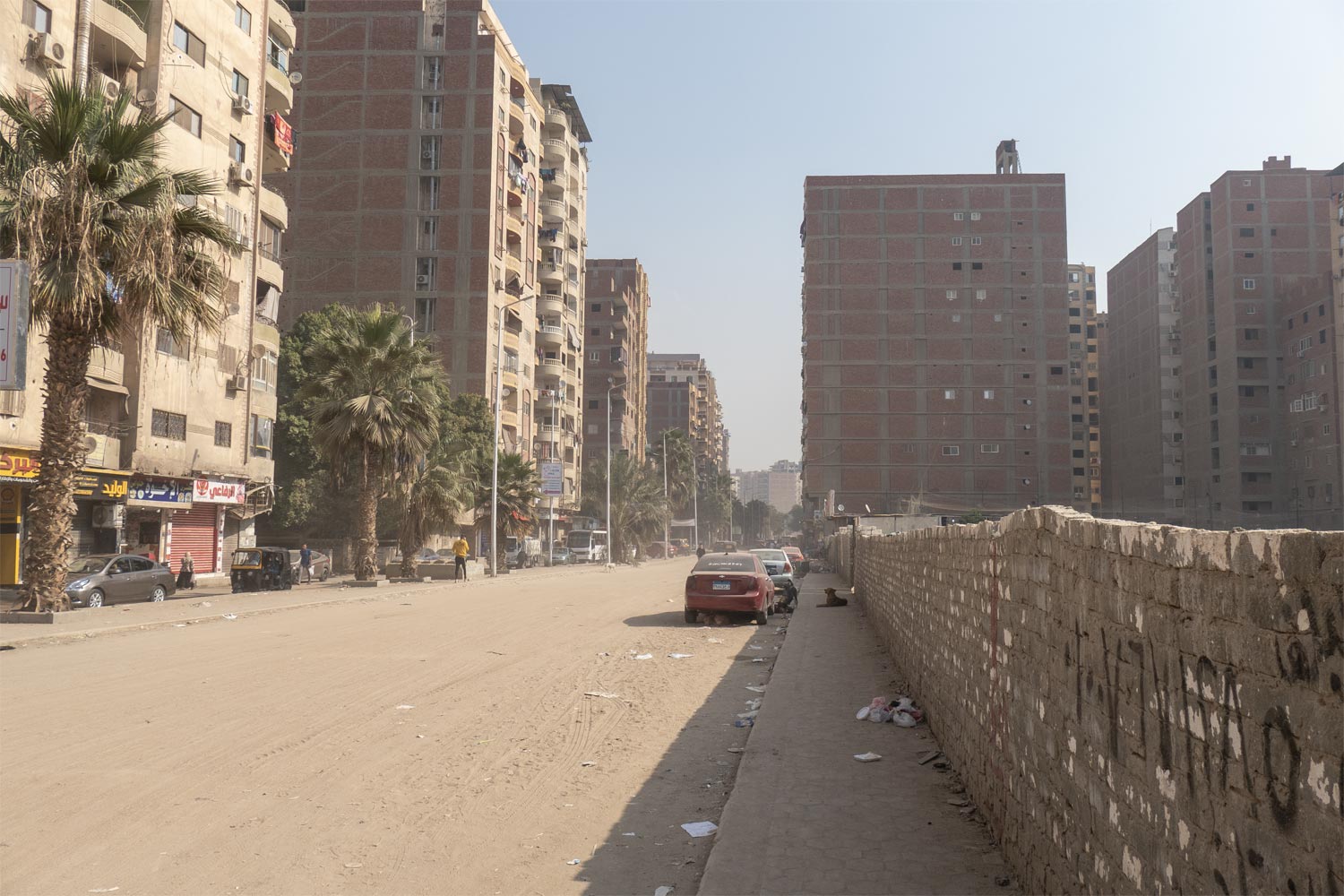
If the streets of Cairo were dusty, then the streets of Giza are simply covered with sand.
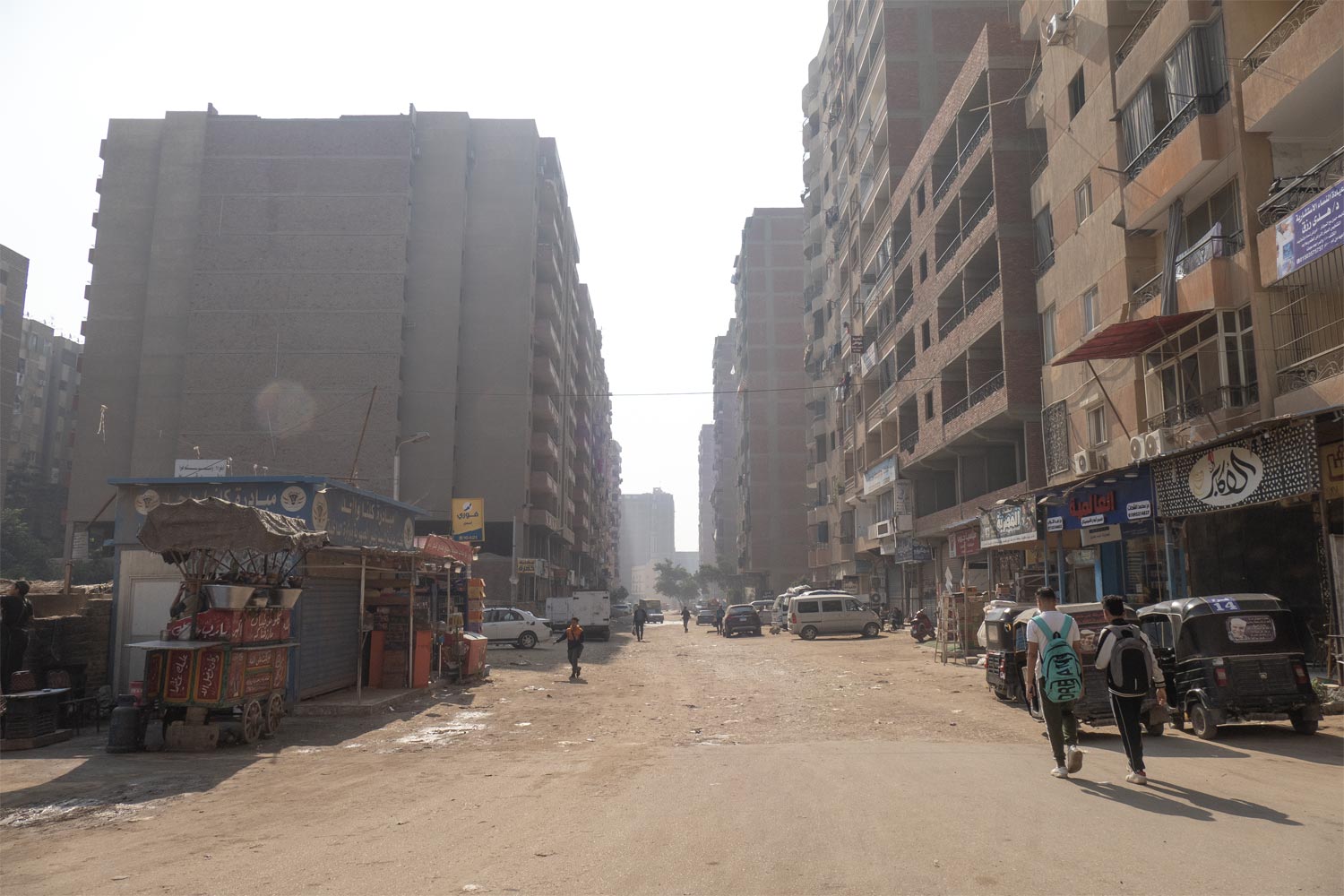
Cairo and Giza are experiencing not a construction boom but a construction disaster. The quality of Egyptian housing cannot be compared to Asia, which also suffers from block high-rises. Not even close! Most of Giza isn’t even paved with asphalt. High-rises seem to be built right on the sand.
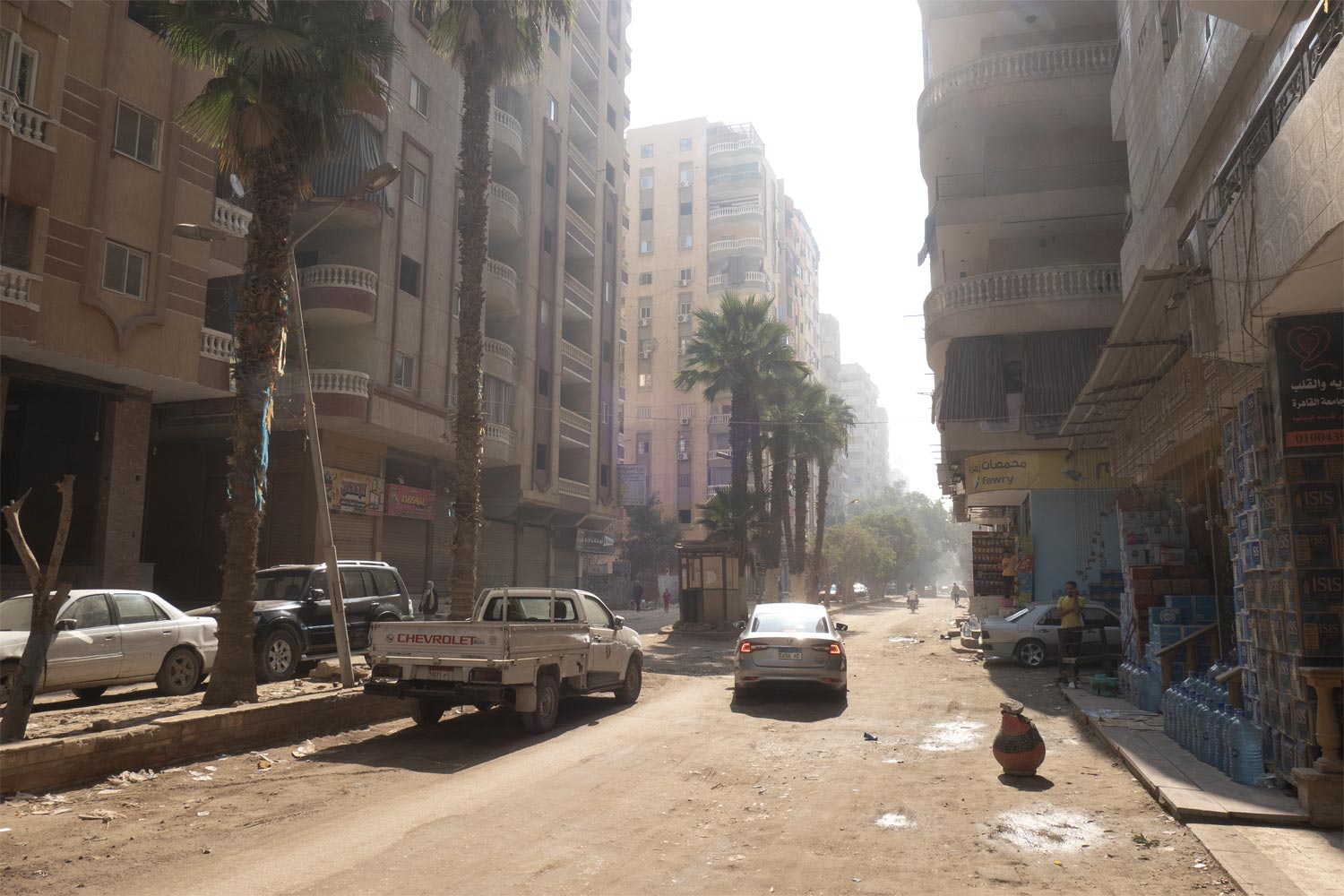
There is no proper garbage collection in Giza either, so there are dumps everywhere in the city. With the heat reaching 40 degrees Celsius, an incredible stench surrounds these dumps — in other words, almost everywhere in Giza.
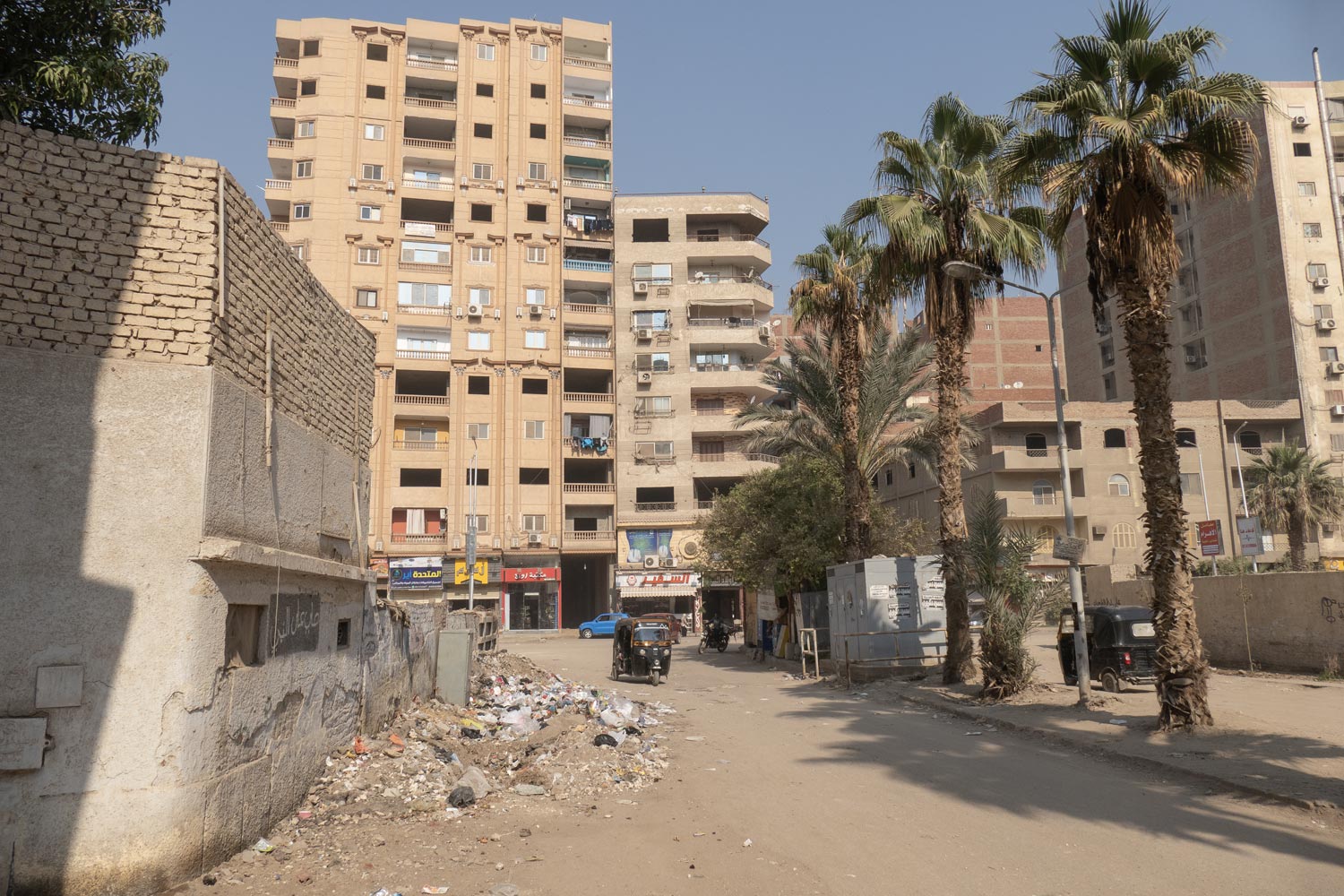
At night, Giza turns into the most eerie place on earth. On one hand, some streets have no lighting at all. On the other hand, electricity is extremely cheap in Egypt, and there’s a cult of illumination, so all the stalls and apartment windows are lit up so brightly that they probably blind astronauts on the ISS.
In this nighttime illumination, all the dust suspended in the air turns into a dense fog!
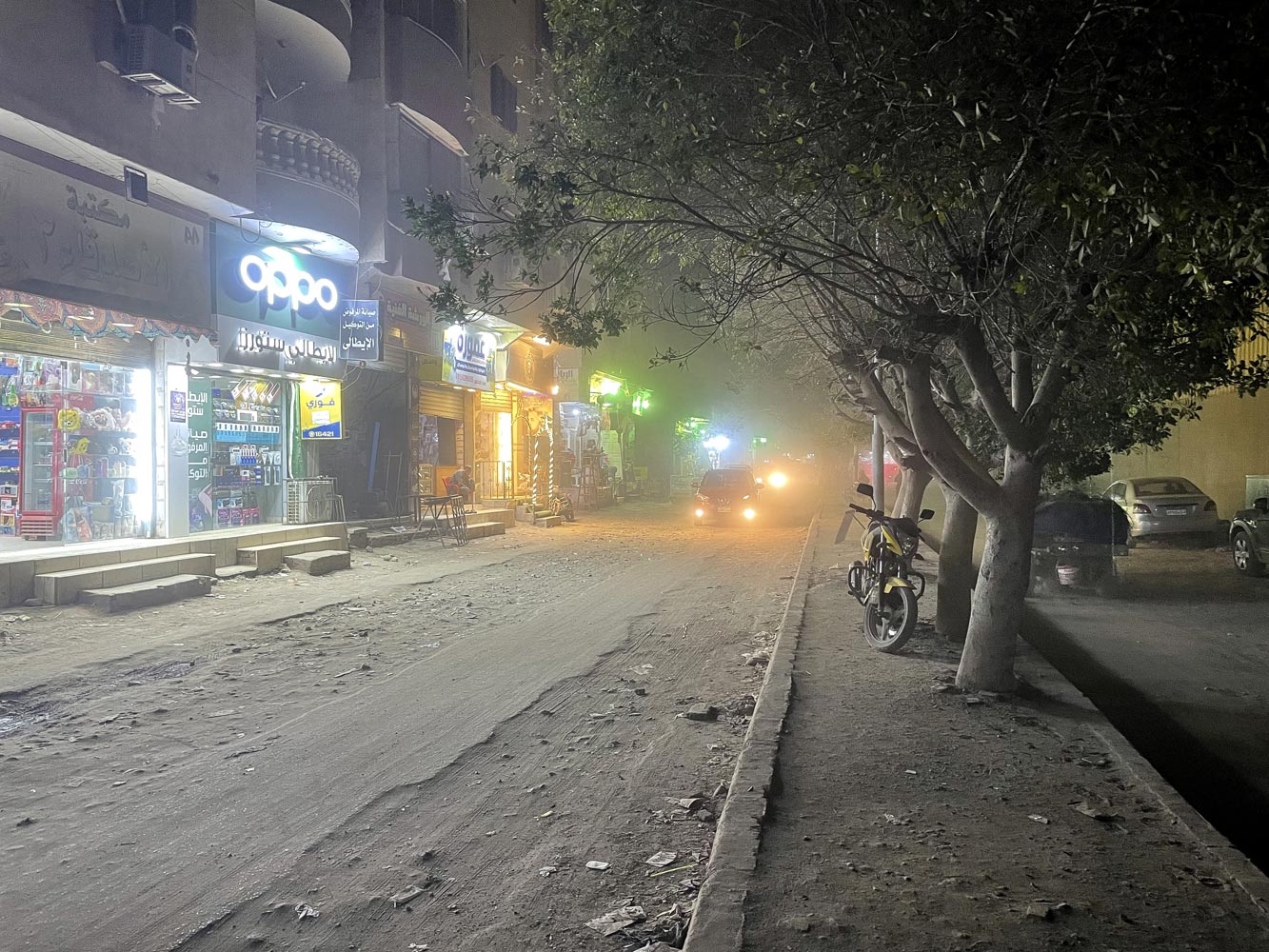
Walking the streets of Giza in the evening is a surefire way to break a leg; it’s just a matter of time. There are no sidewalks in the city, so people walk directly on the road or along the median strip.
But driving in Giza is impossible too! Cars get stuck in kilometer-long traffic jams, so tuk-tuks are popular here. They can somewhat maneuver around the traffic through alleyways. However, there’s another issue with tuk-tuks: they have no windows or doors, so all the dust flies into your eyes and lungs.
As for the housing itself, it’s horrendous. Many buildings are not plastered, and others, even if they are, look no better.

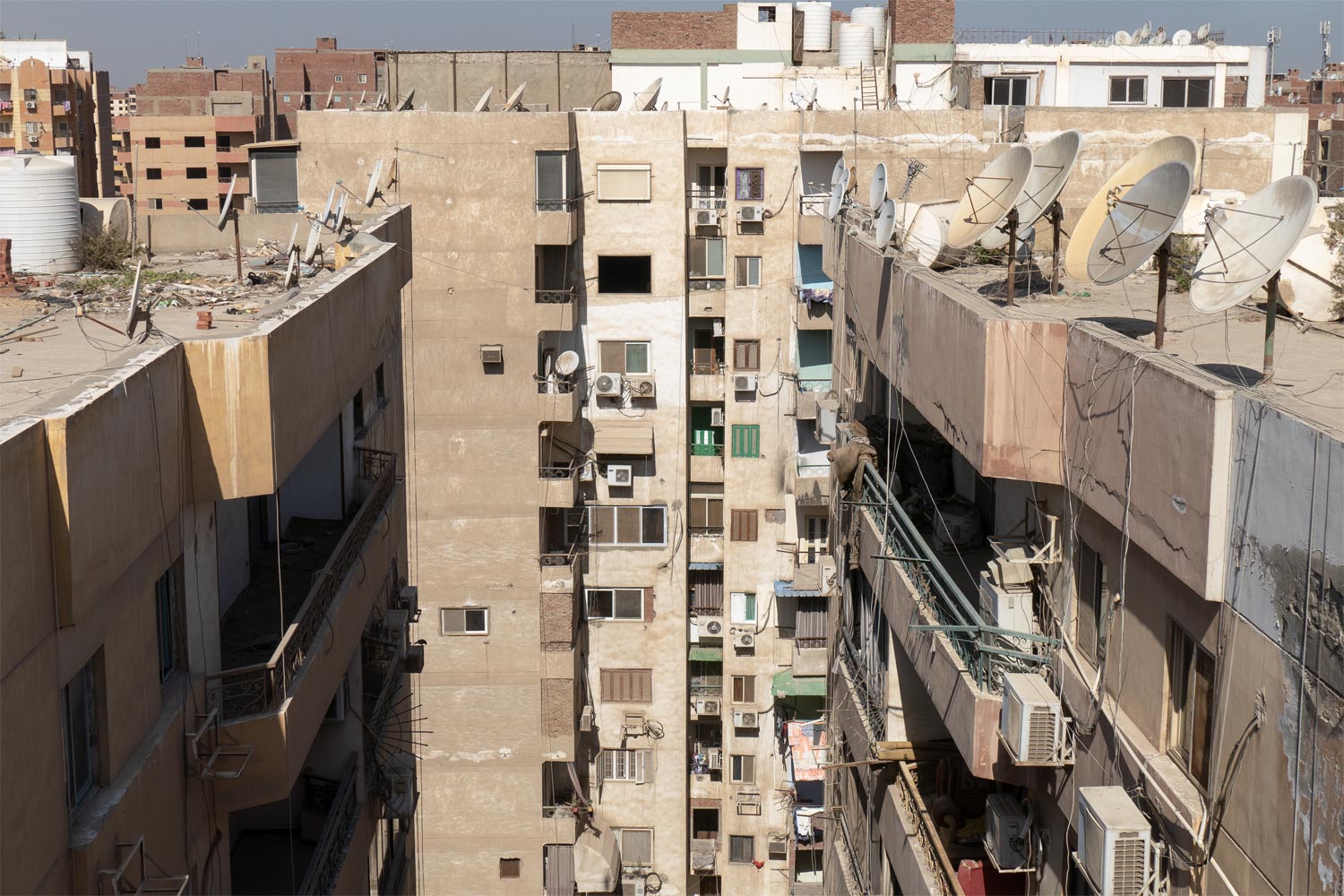
This can also be seen in Cairo. However, in Giza, the elevator cabins don’t even have doors!
When the elevator is moving, you can literally see the building’s innards — the unfinished concrete. As a result, the elevator is also covered in dust, with construction debris falling into it from the shaft.
The cherry on top: the elevator plays prayers from the Quran as background audio.
And this is not just one district. This nightmare spans an entire city with extremely high building density. Your hair stands on end when you catch a glimpse of a football stadium through a narrow gap between the buildings.
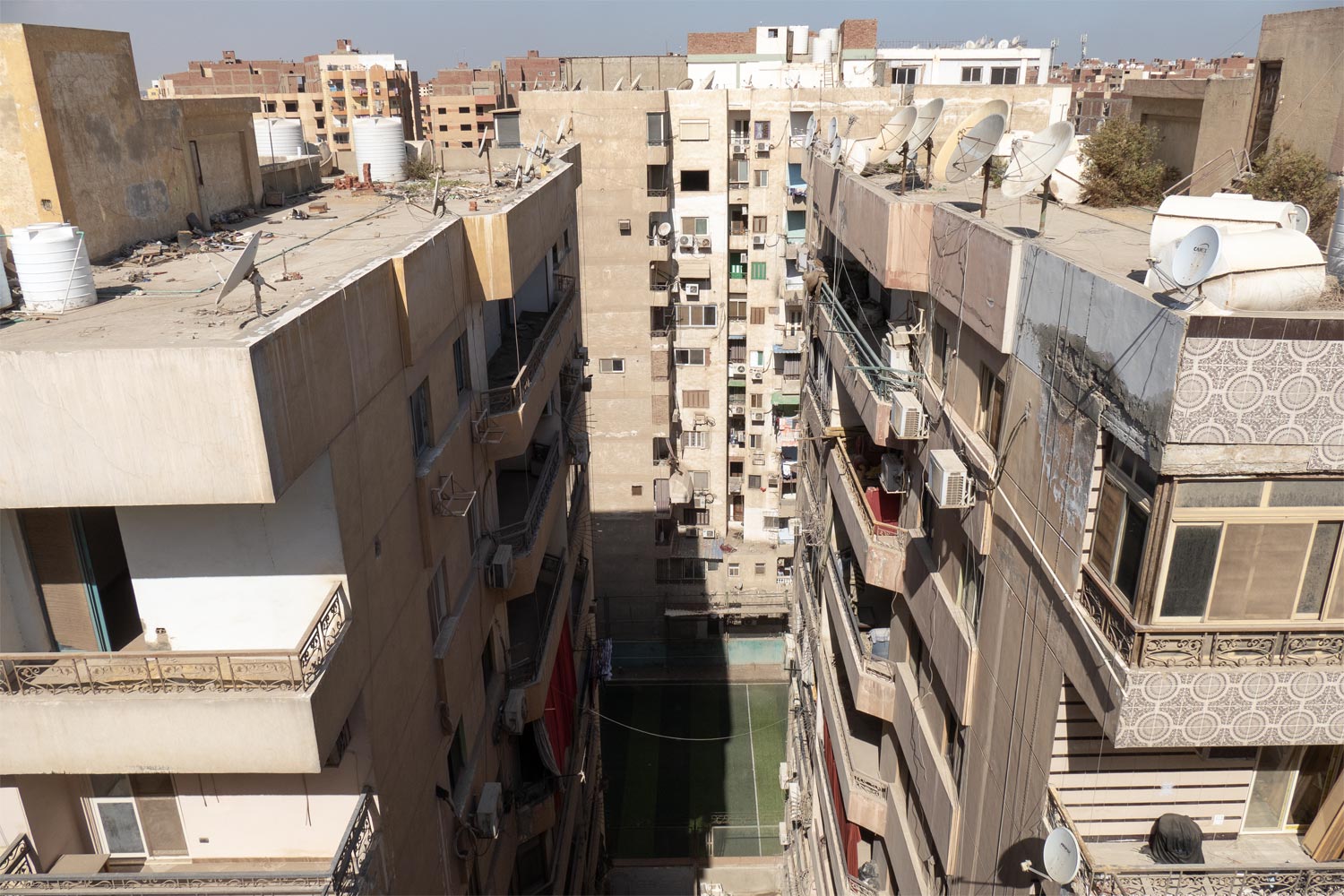
And what’s happening below the windows! Egyptians simply throw trash out of the windows, so garbage dumps bloom and rot right under the buildings.
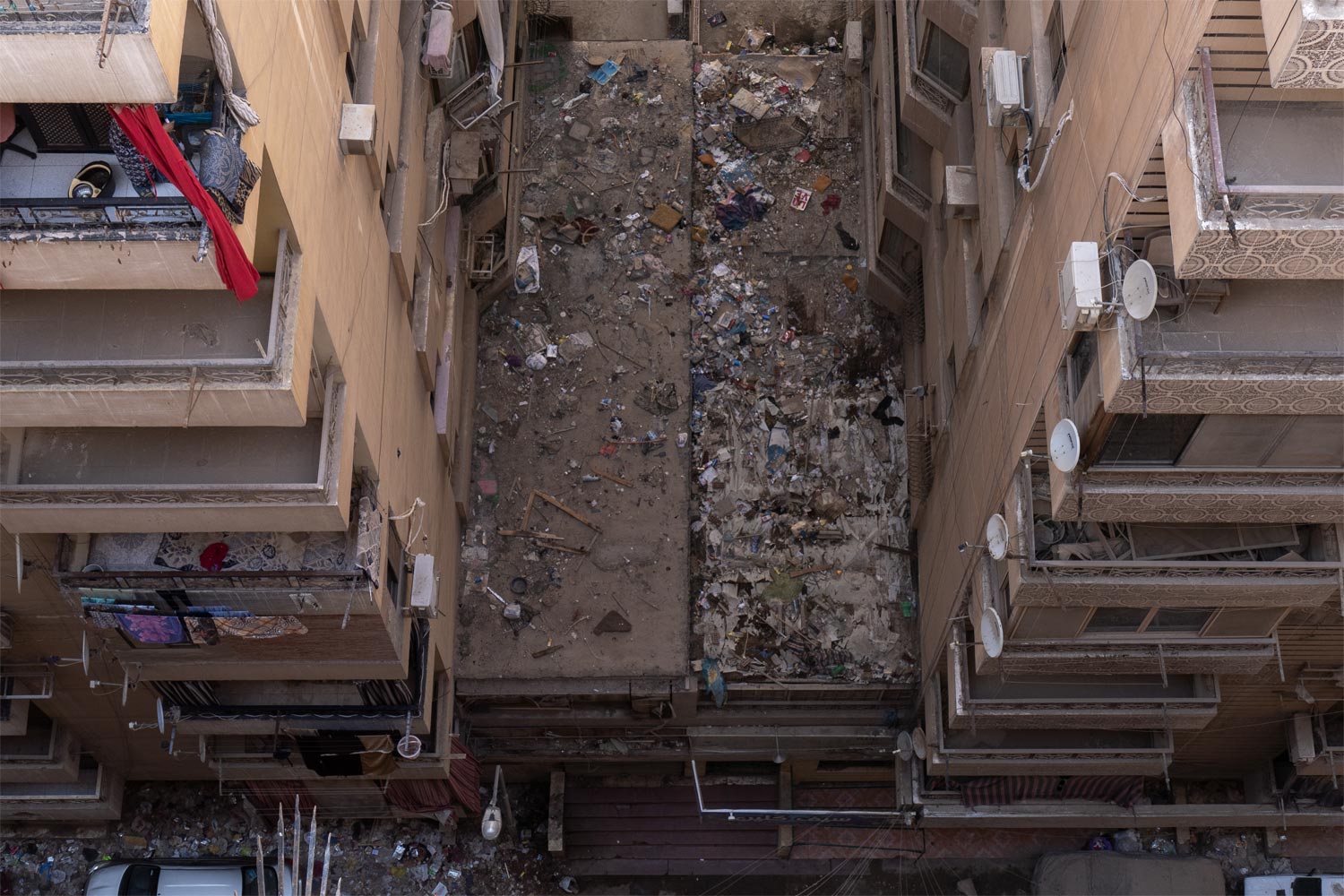
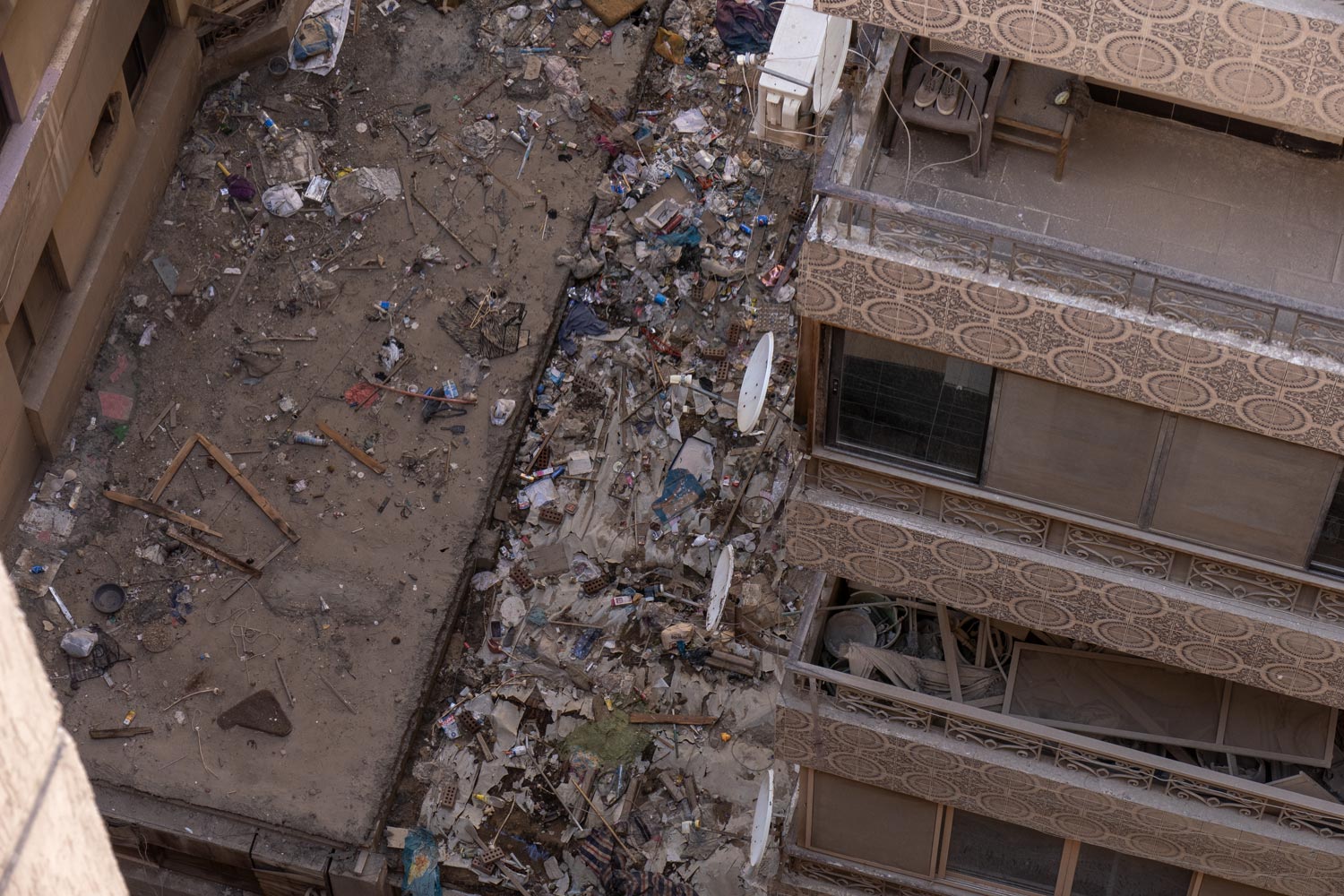
As for the apartments themselves, it all depends on the person. If a pig lives in the apartment, then the apartment will be a mess. The author stayed in one owned by a wealthy Egyptian. It was the top floor, so the apartment had a magnificent balcony.
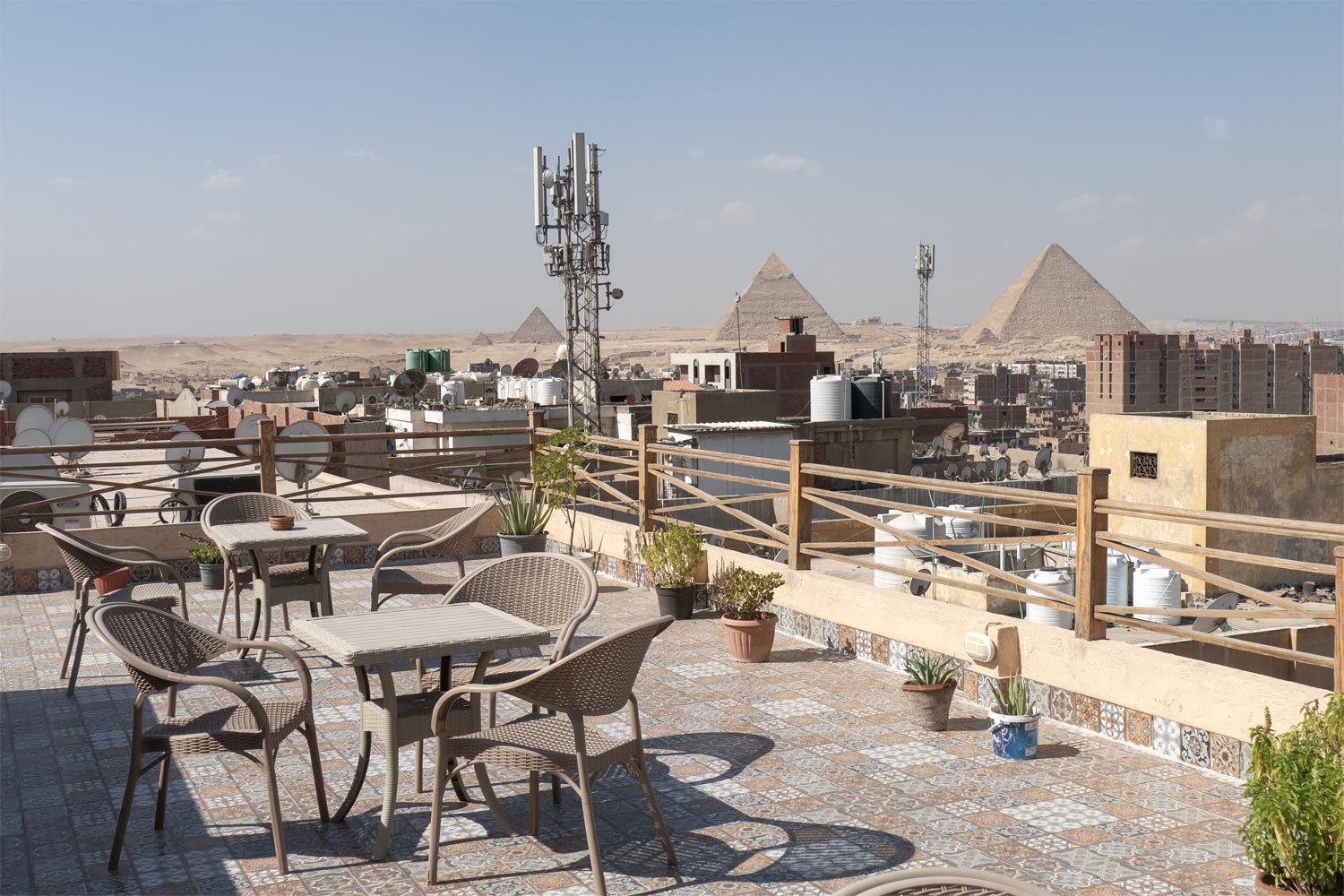
It seems that only the top floor is livable here. On your private rooftop, you can arrange flowers and even set up a pool. The dust doesn’t reach here, and the noise of the cars can’t be heard. A true oasis in this hell.
And yes, you can see the pyramids from here.

